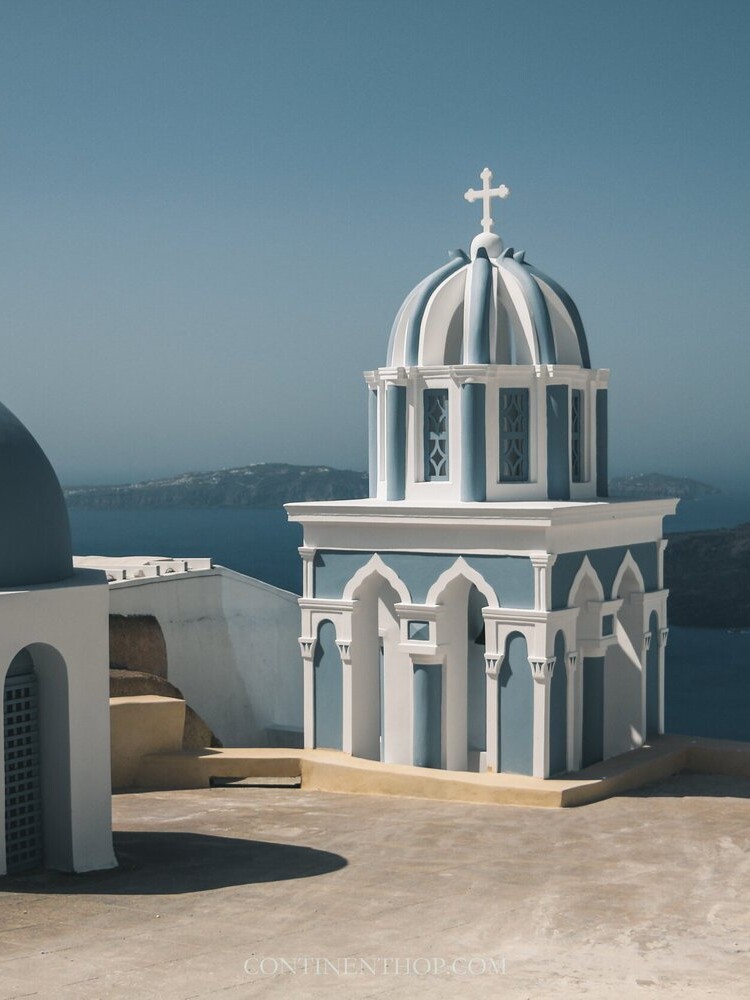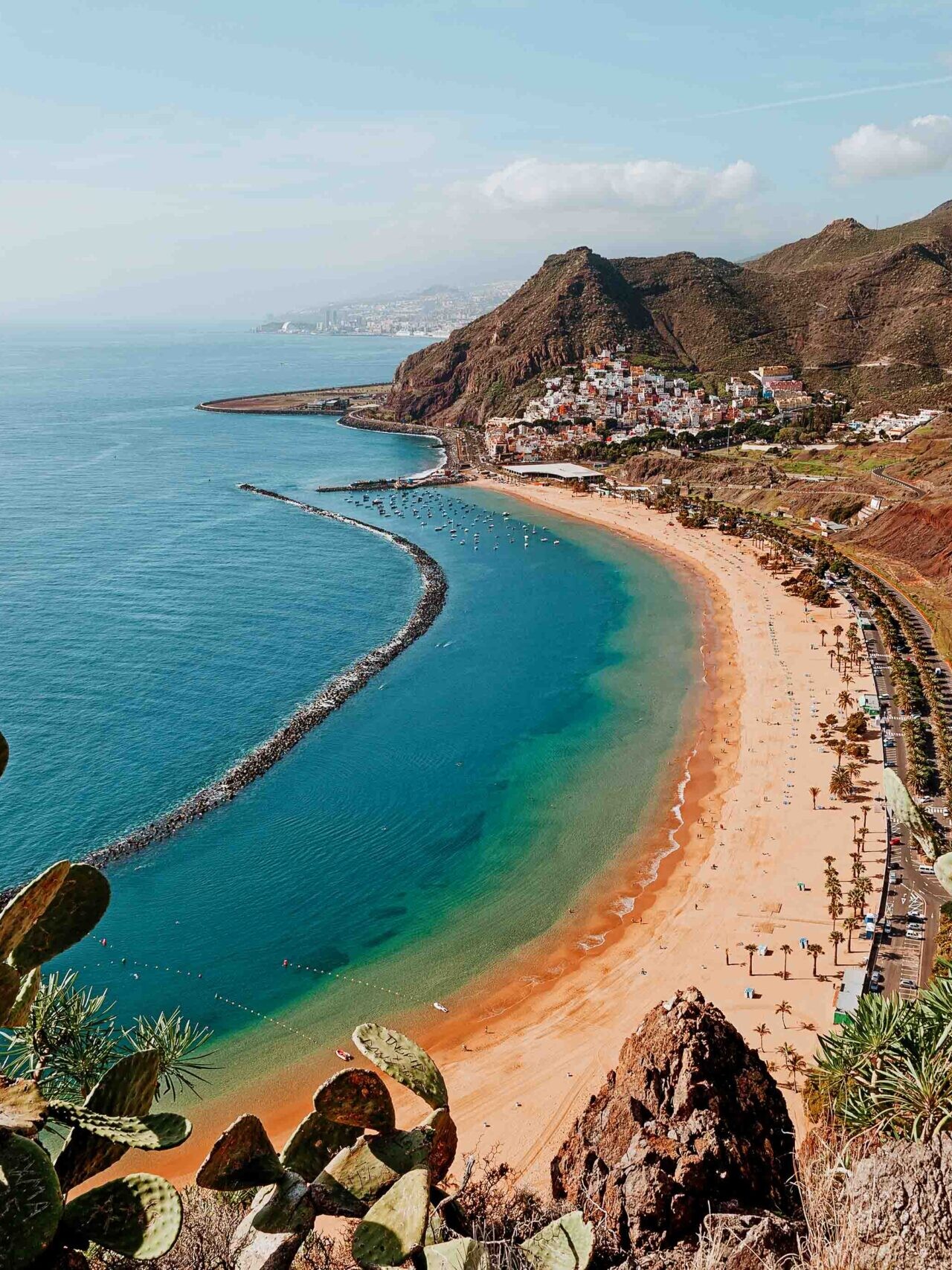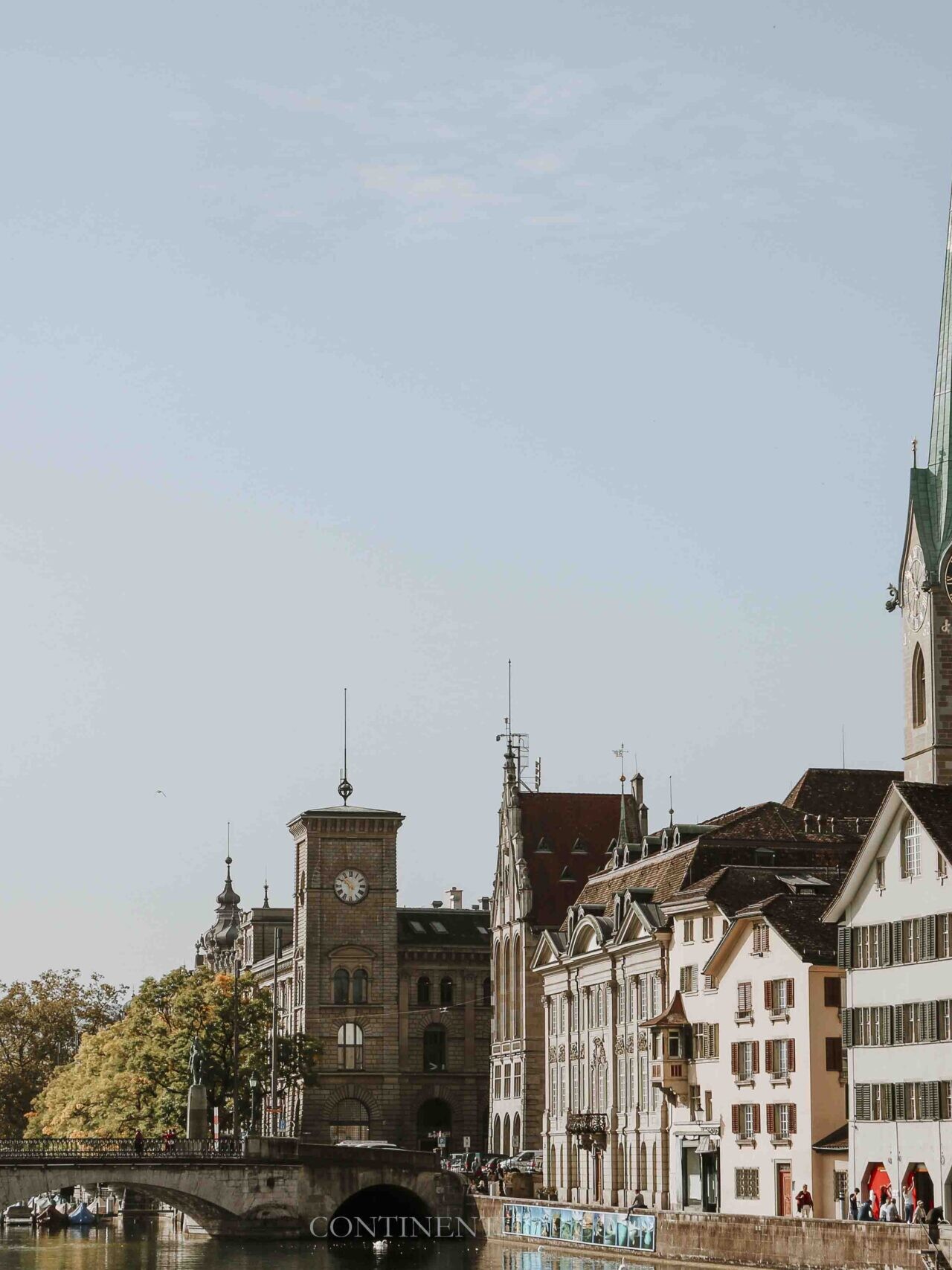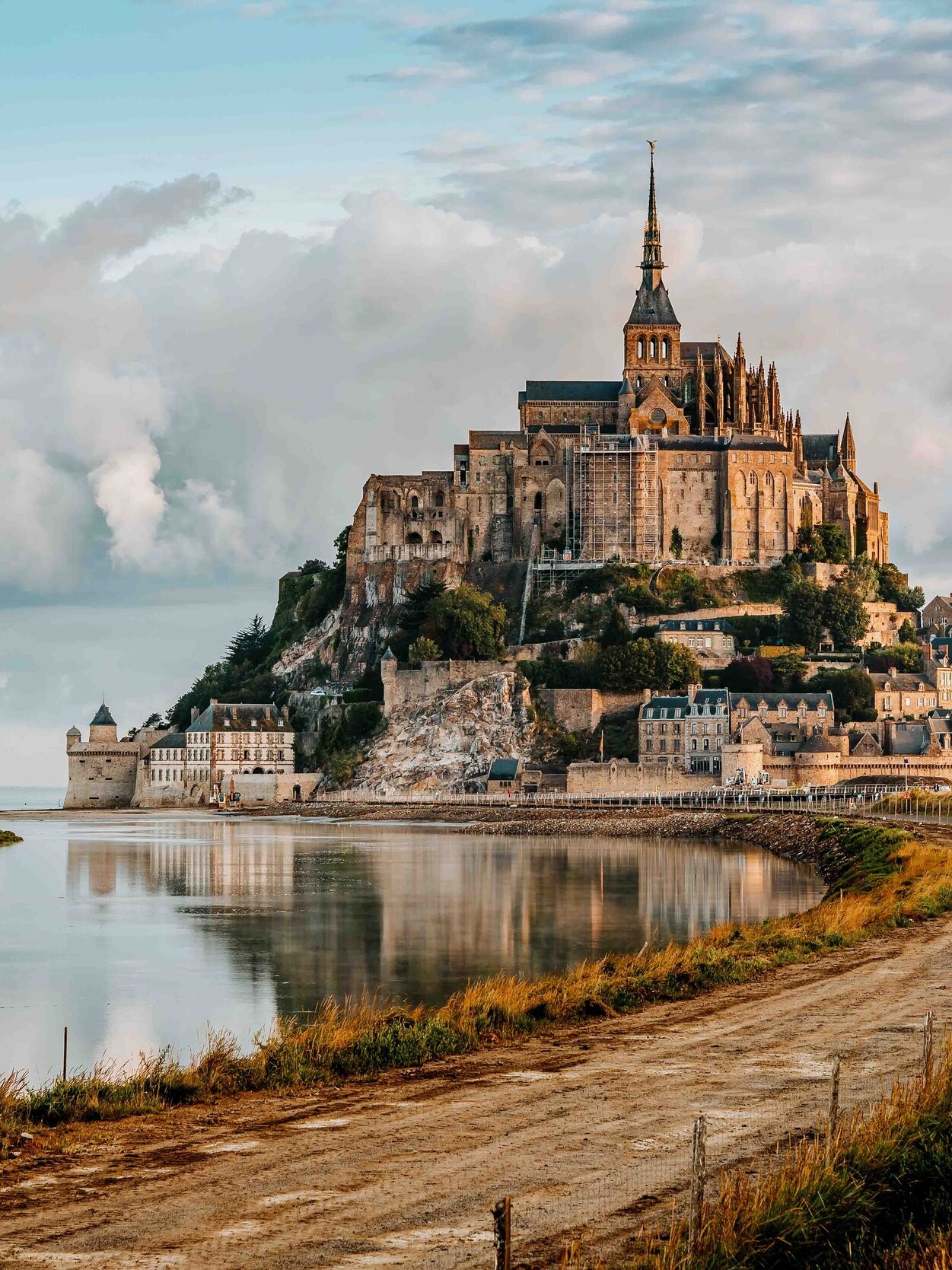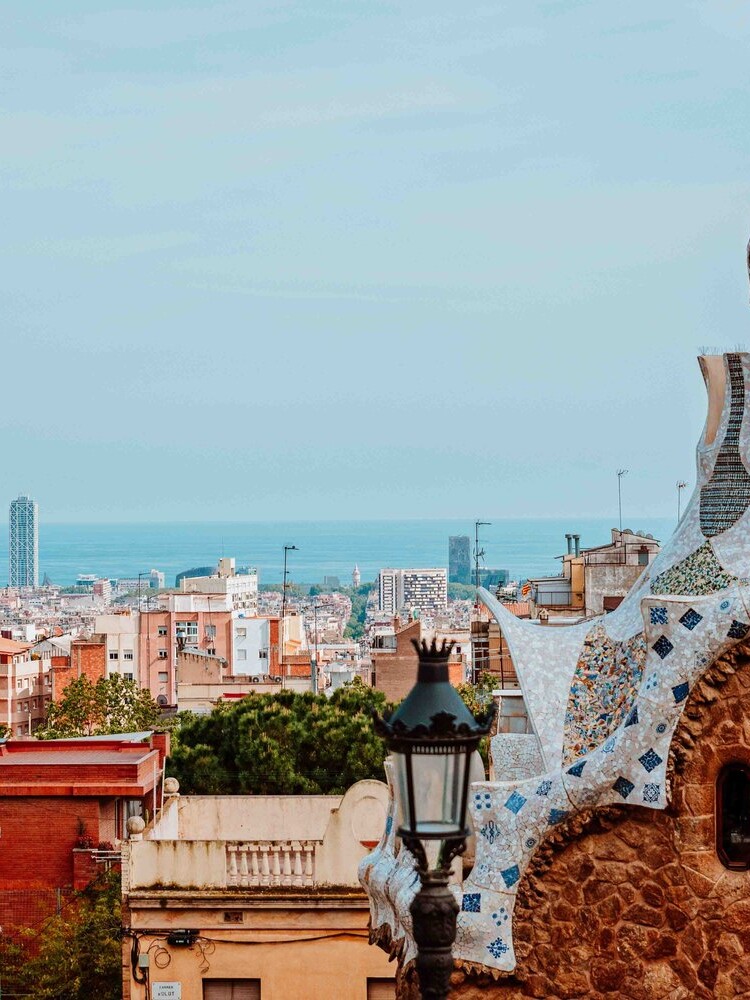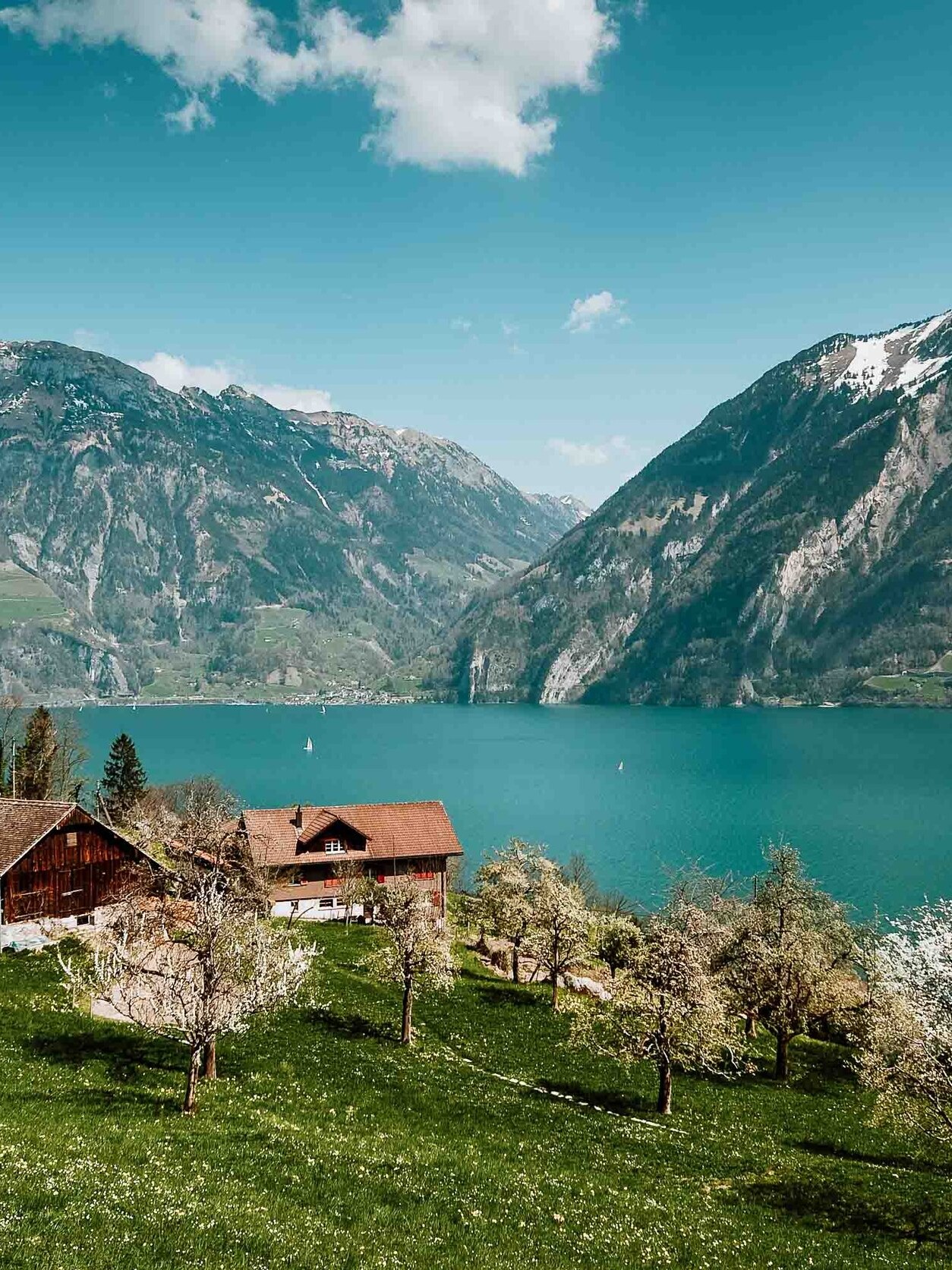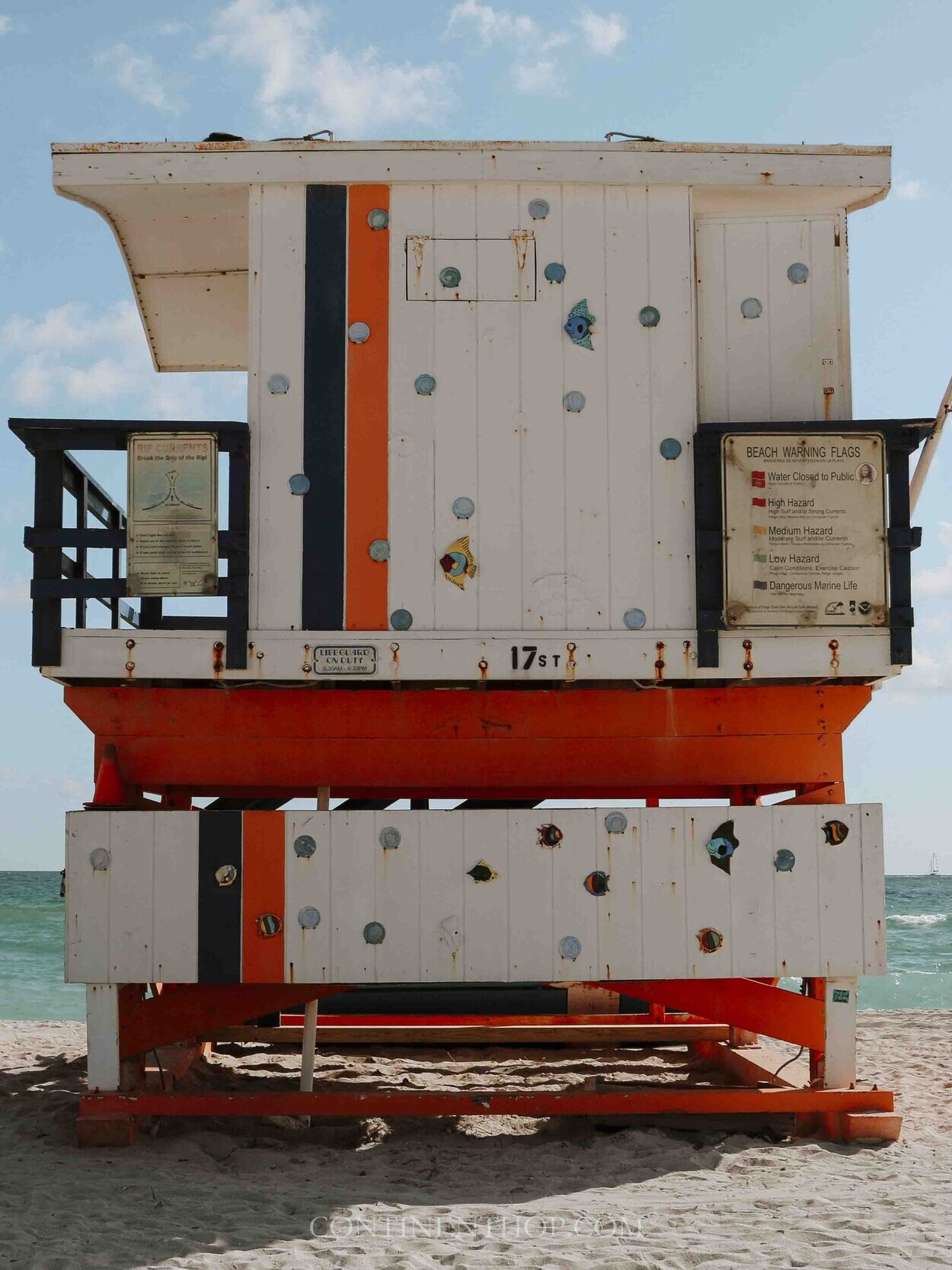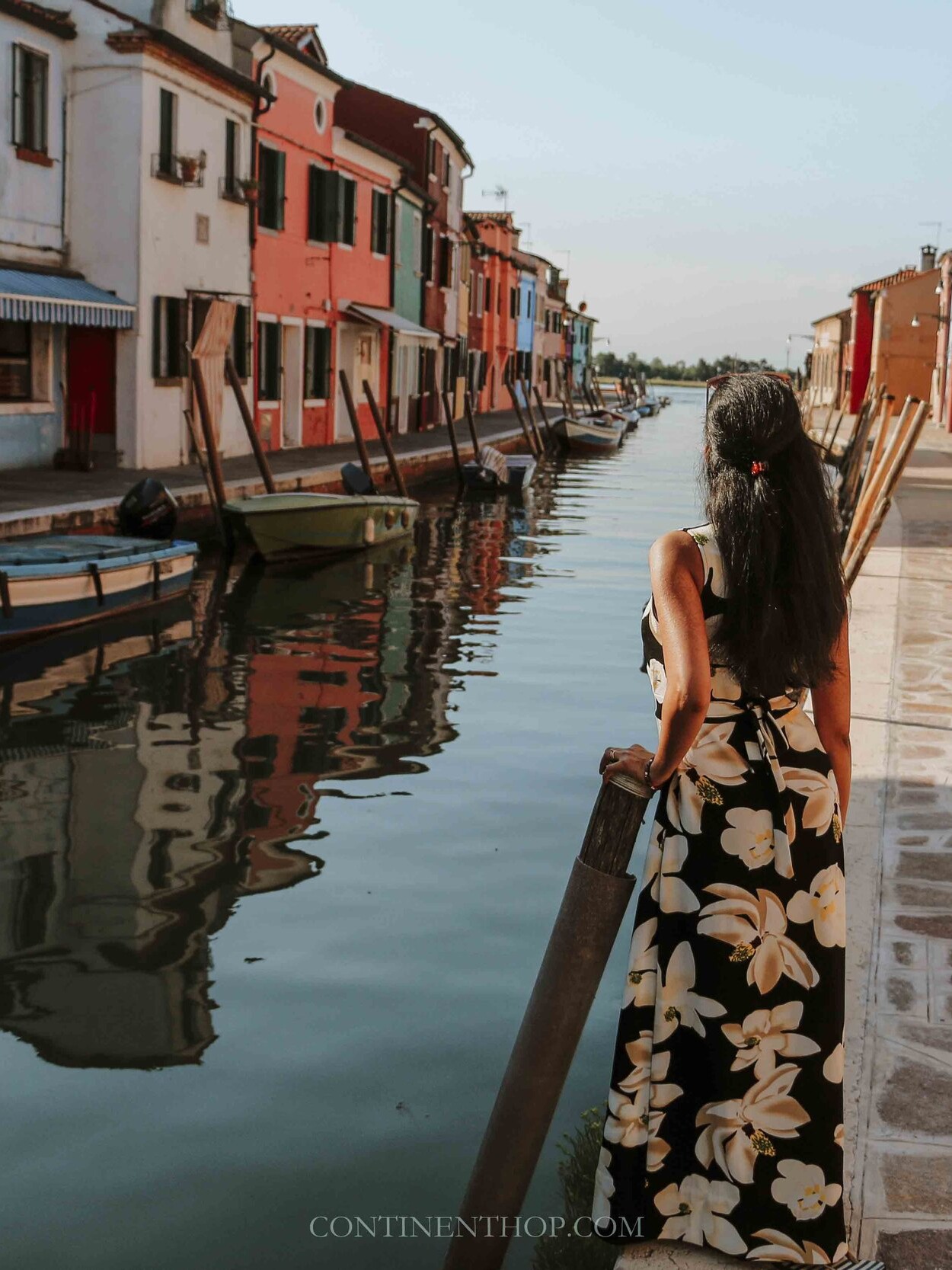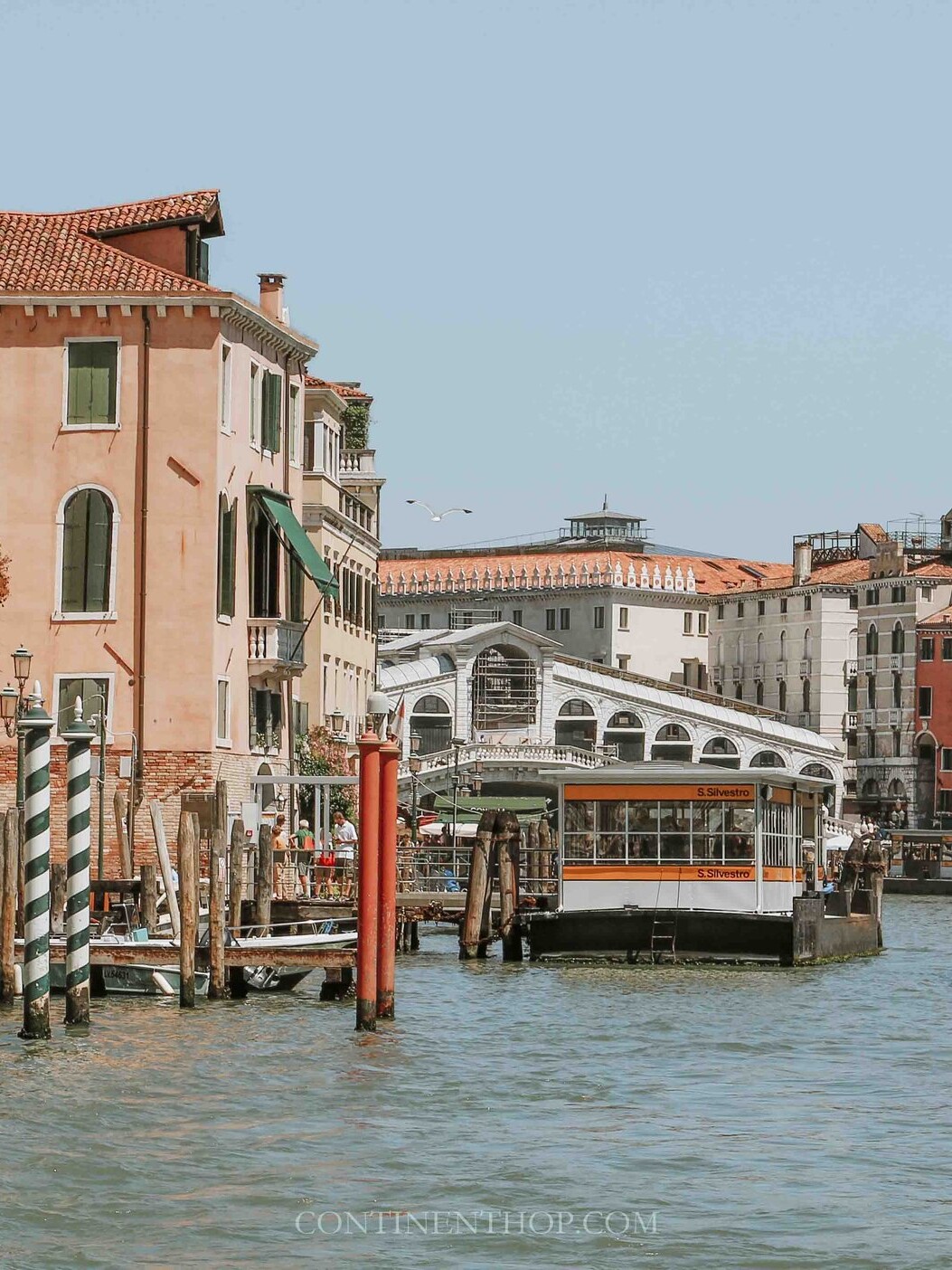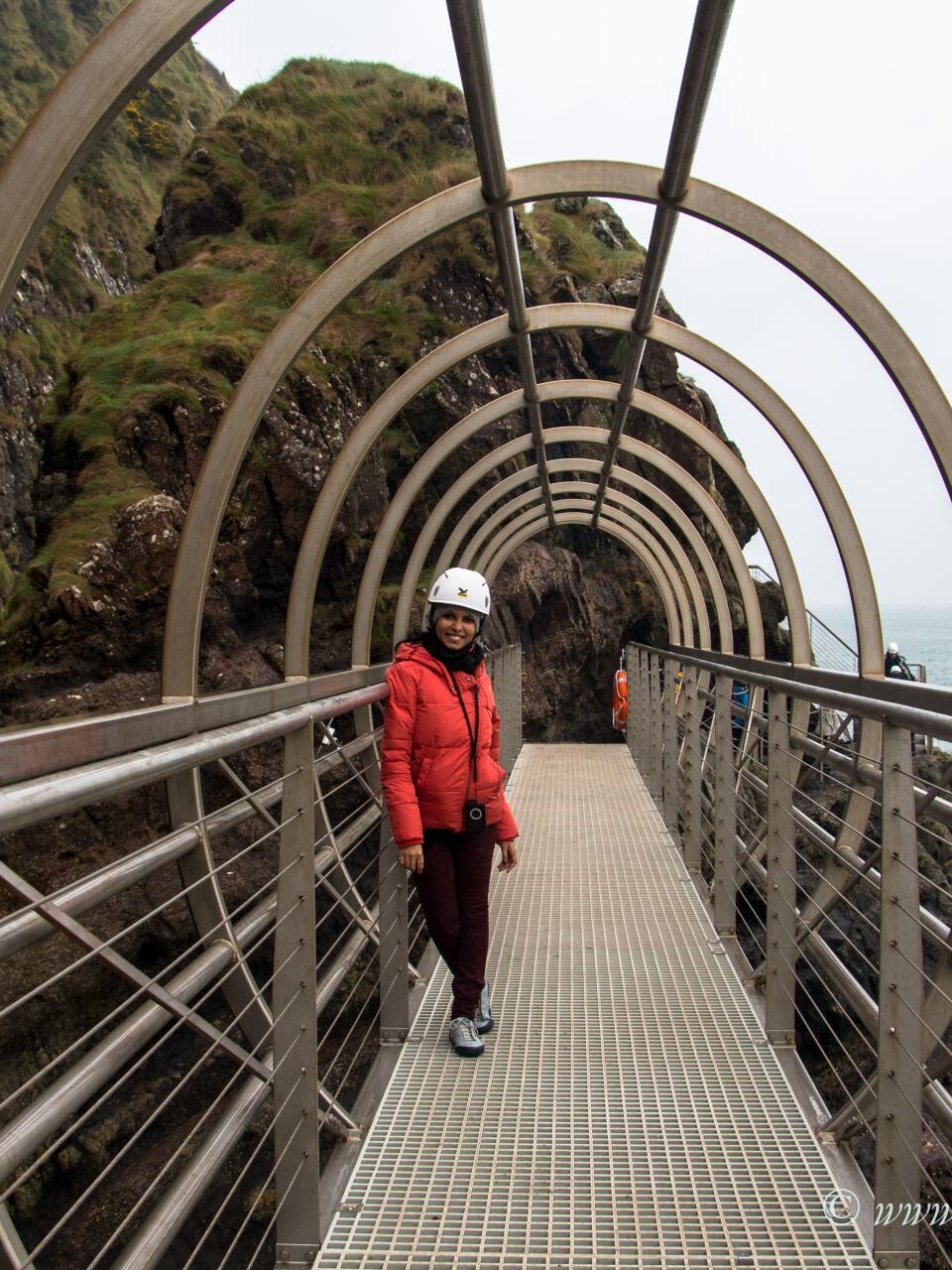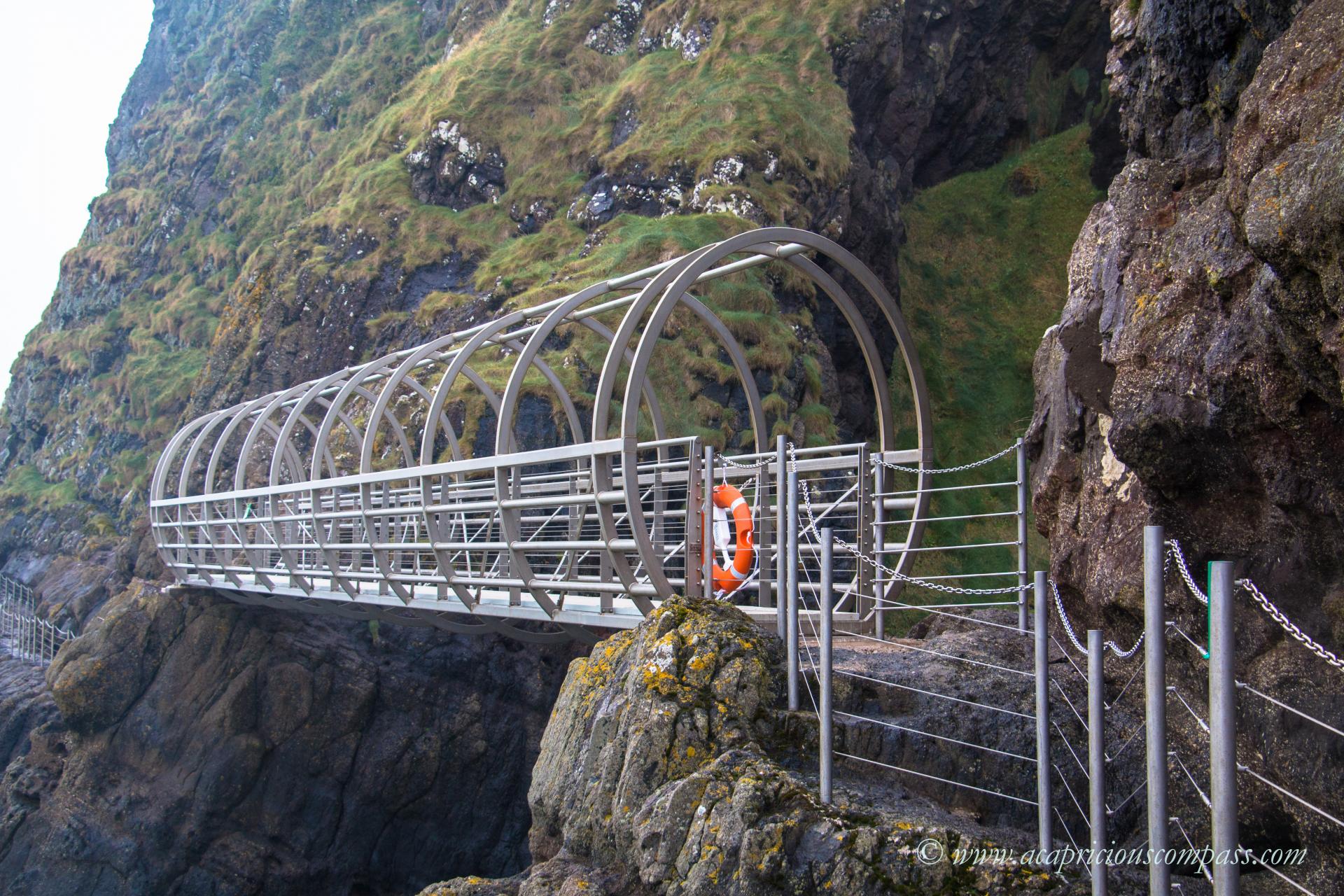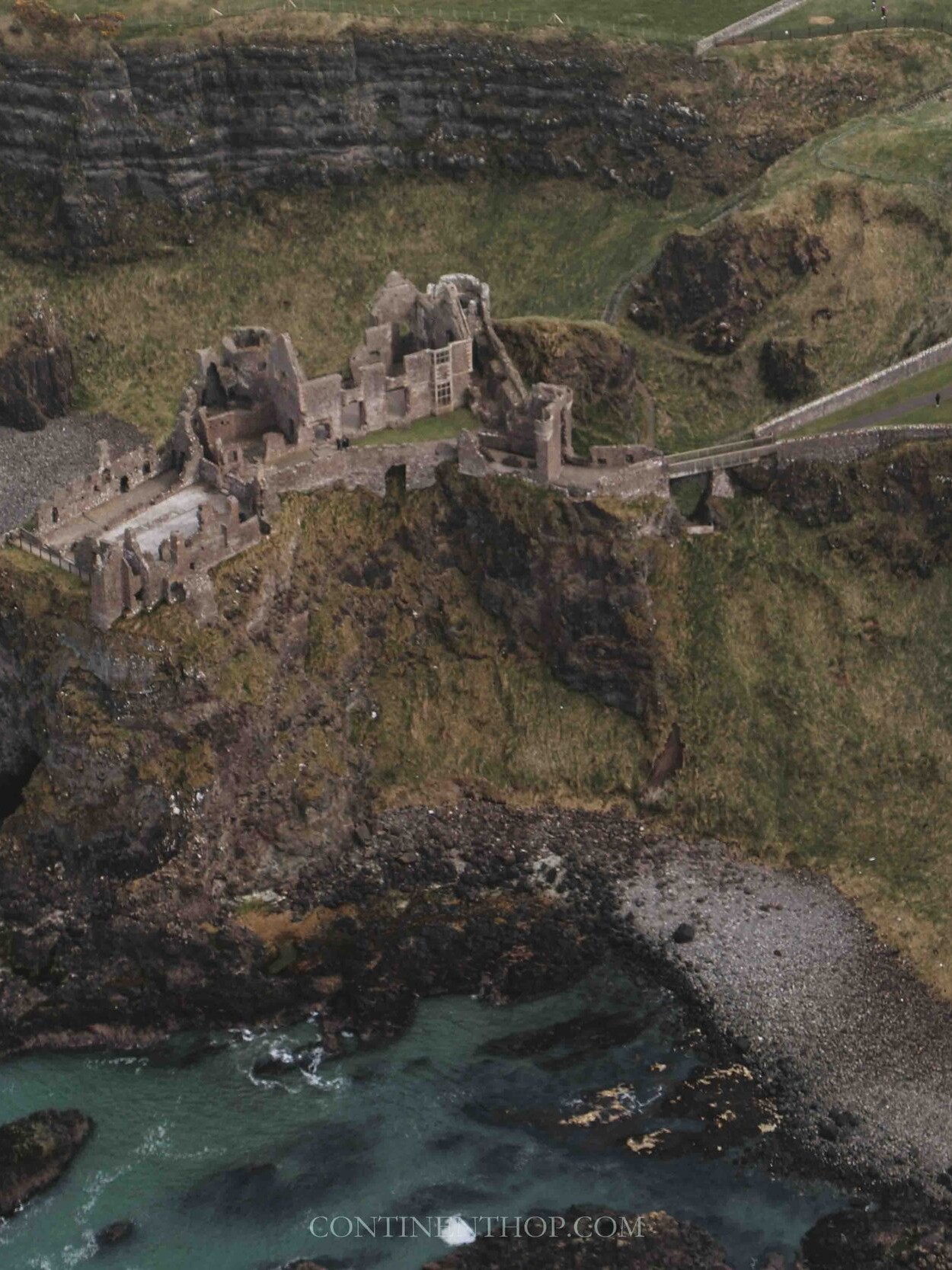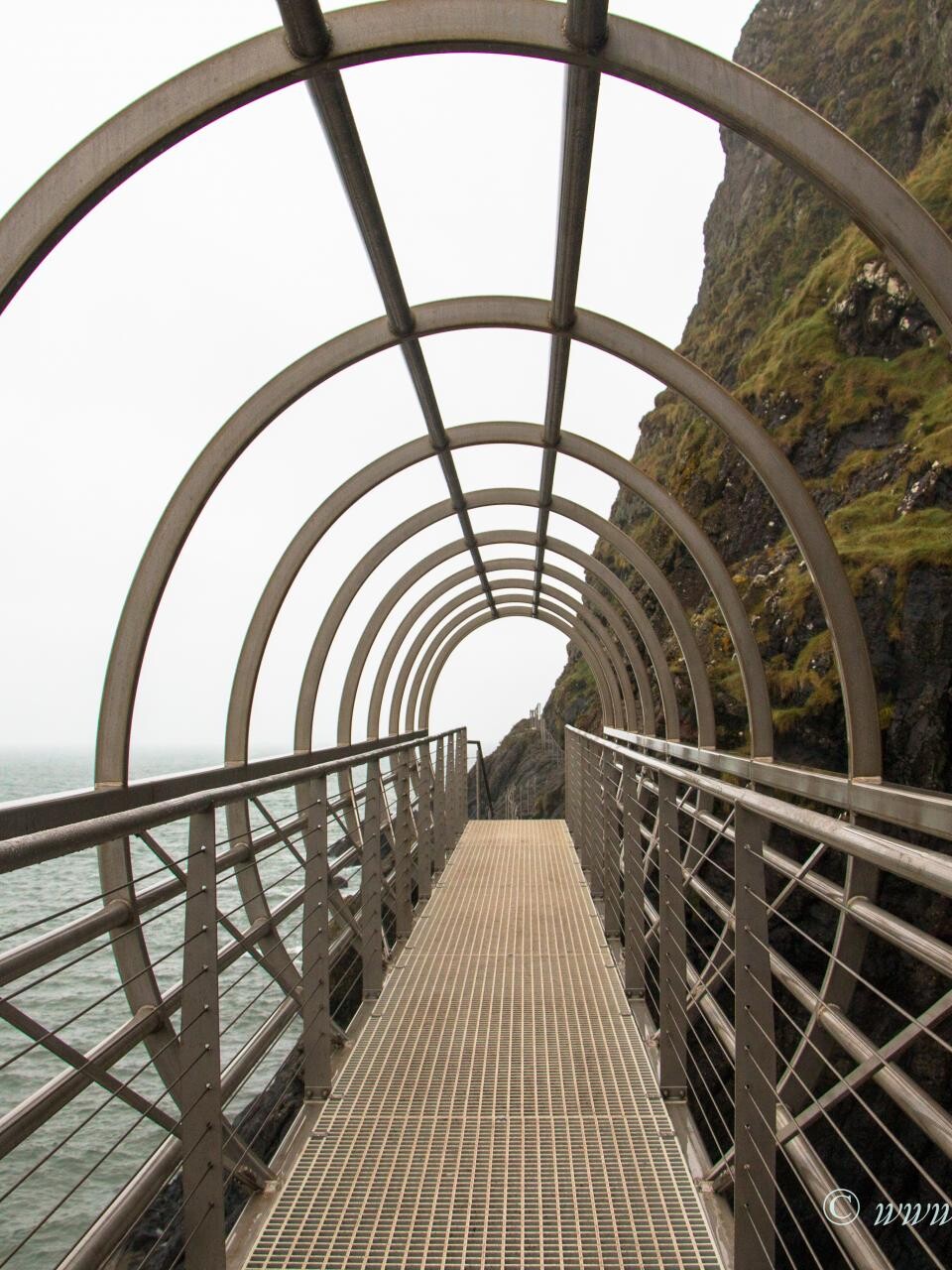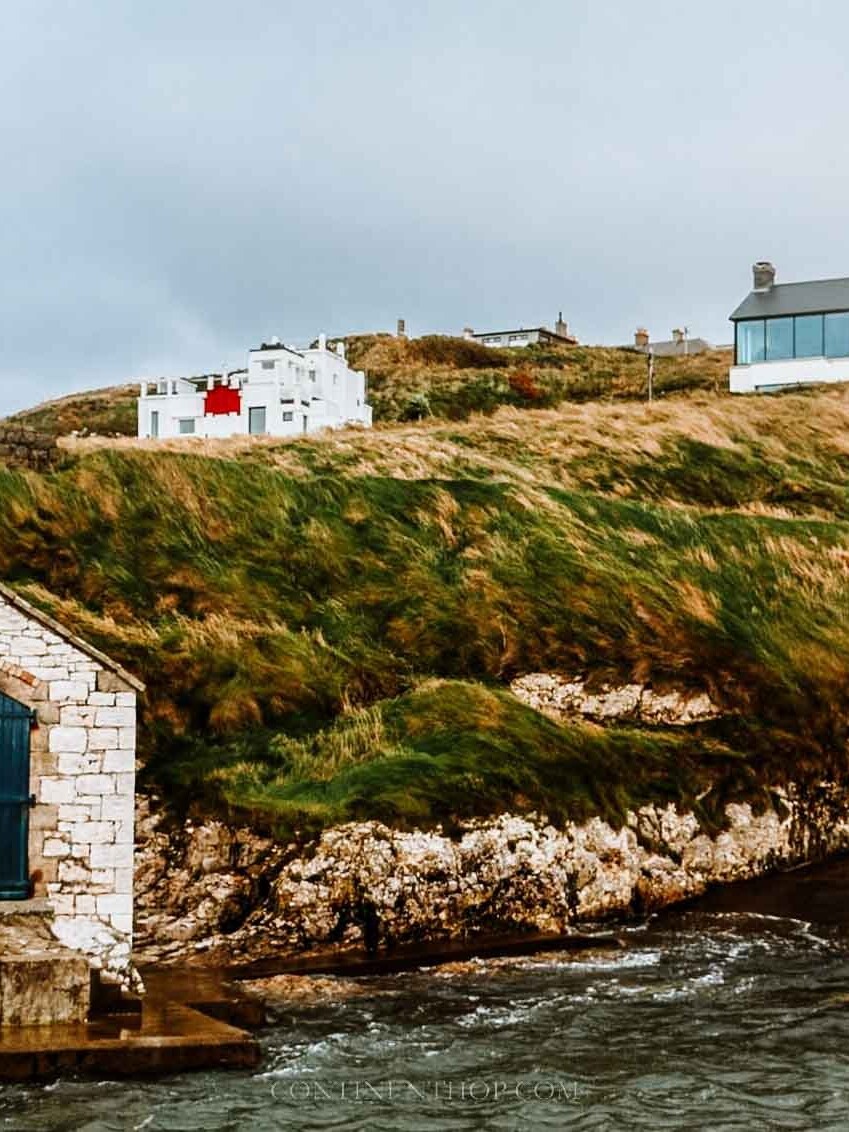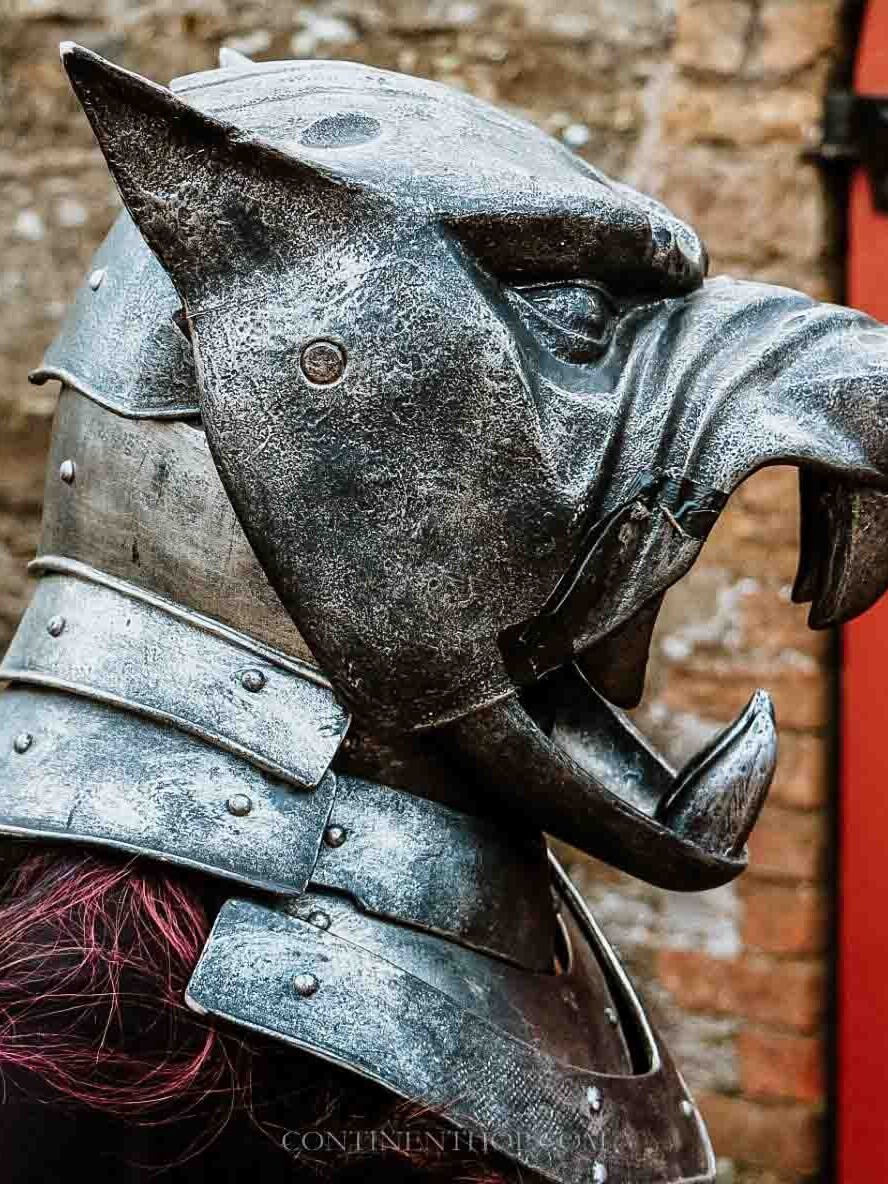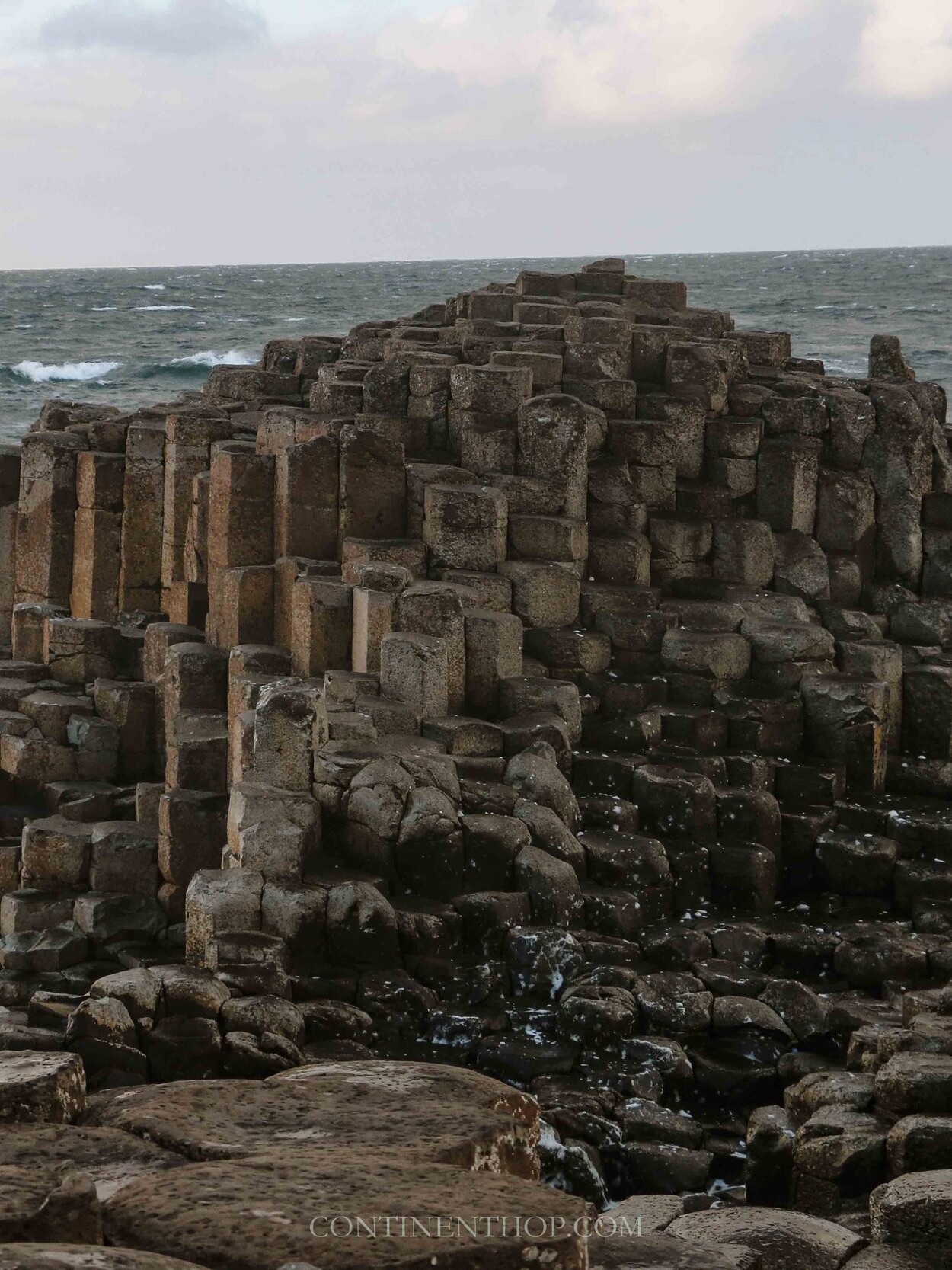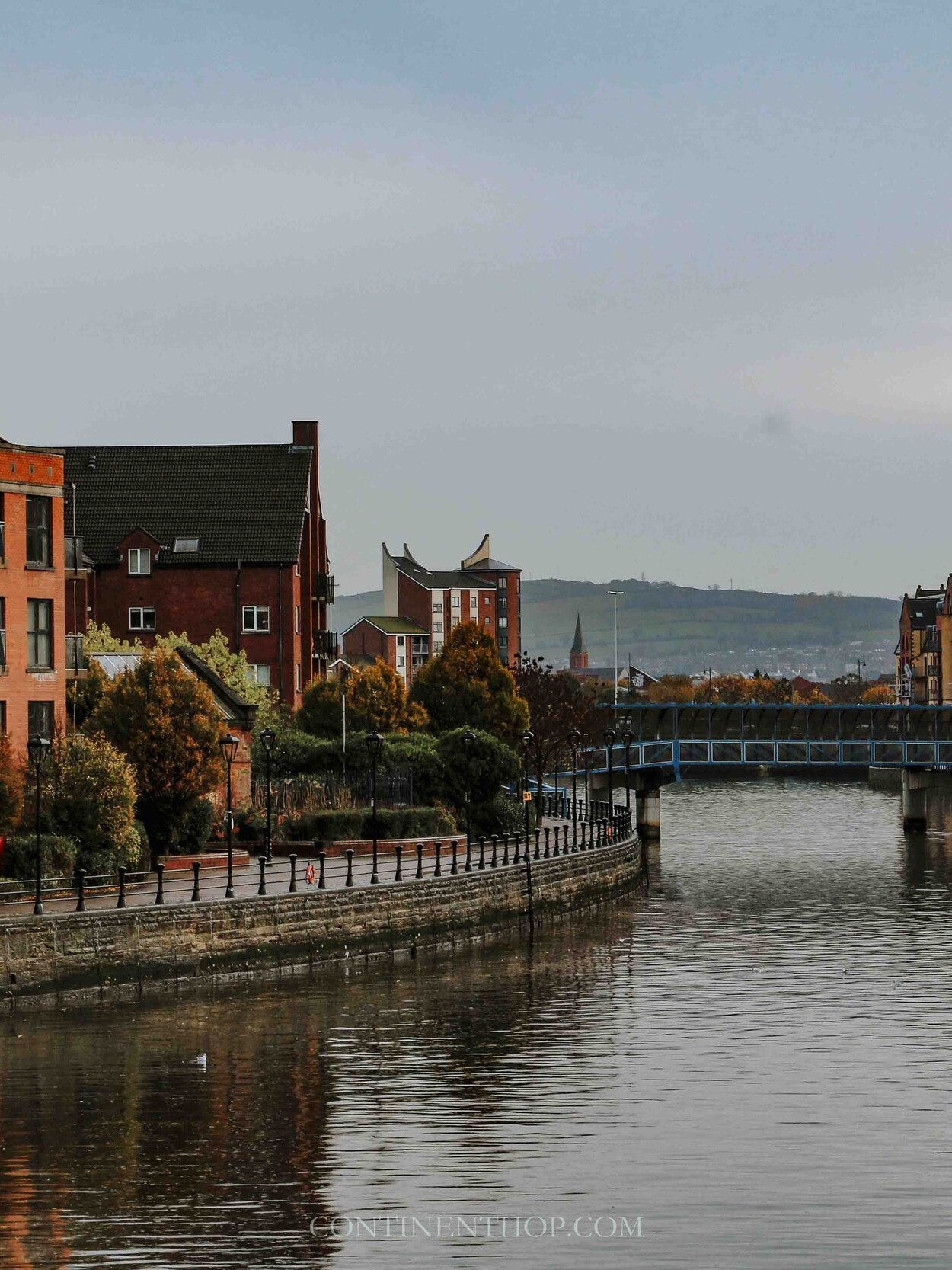Turkey is huge and it’s sometimes overwhelming as to what to do in Turkey on your visit here. While there are many things to do in Turkey, it’s best to target a region to get the most out of your holiday. This 10 day itinerary in Turkey will help you visit the most stunning places while keeping it mid-paced.
Turkey has everything….including a desert at Karapinar, which makes it such a vast and vibrant country.
Balloons floating in an idyllic setting at Cappadocia is what Turkey is most known for, which can make visiting this location expensive sometimes, however, there’s no dearth of what to do in Turkey, no matter which region you pick.
This 10 day Turkey Itinerary covers some of the must-do locations just like the Iceland itinerary covered the best of the South coast. Imagine mineral-rich azure waters floating down natural terraces on a hillside, living in a cave while watching hot-air balloons float by and watching numerous seaside towns while enjoying fresh seafood and a cup of invigorating coffee.
This 10 days in Turkey Itinerary includes this and much more while ensuring you can modify it to suit your pace!
Best time to visit Turkey
Like most places around the world, Turkey has extreme summers and extreme winters.
To avoid the extreme heat or cold of Turkey’s geography, the best time to visit Turkey is during the spring months of April and May or the autumn months of September and October just like some European cities like Santorini.
During the spring and autumn, the temperature in Turkey ranges from 20 degrees Celsius to 30 degrees Celsius – which is pleasant enough to go around exploring without facing any issues. Summers (June to August) are usually a very crowded time to visit Turkey and the coastal regions like Antalya can become very hot going up to 40 degrees Celsius.
In winter, places like Cappadocia and Istanbul can sometimes touch zero degrees and see frequent snowfall.

Visa’s
Turkey is currently requiring a visa from certain visitors, as well as a special entrance form introduced due to the ongoing pandemic.
Luckily, the Turkey visa can be obtained online, either via an official government website or with the help of an e-Visa agent, for a more user-friendly option.
If your country is listed as one of those that need an e-Visa for Turkey, apply for yours 3 days prior to departure and print the received via email document.
A 10 day Itinerary – Turkey
Here’s what to do when you have 10 days in Turkey
Day 1 – 3 of your Turkey Itinerary – Istanbul
Start your itinerary in Istanbul.
The easiest and most convenient way to reach Istanbul is by flying. Istanbul has an international airport that is well-connected to most cities across the world.
However, you can also choose to take the train to Istanbul which runs from several European cities, but this takes a lot more time. You can even choose to drive into the country from neighbouring European cities.
What to do in Istanbul
Istanbul is a massive city so it’s important to give it a few days to explore properly. It is also important to relax on the first day and get familiarised with the new culture and settings as much as possible before venturing out to explore! Here are some of the best things to do in Istanbul that you can consider during your 10 days in Turkey itinerary –
-
Walk around the Sultanahmet Square and visit the Topkapi Palace, Hagia Sofia and Blue Mosque amongst other historical and architectural wonders.
-
Shop for lamps, Turkish towels and other souvenirs at the Grand Bazaar. (Don’t forget to bargain!)
-
Take a spa day and treat yourself to a traditional Turkish Hammam
-
Try the Turkish hookah “nargile” at a streetside place around Taksim
-
Take a Bosphorus River Cruise during sunset
-
Check out Istanbul’s nightlife around the Bosphorus area and visit Taps Bebek for some heavenly beer!
-
Try the traditional Turkish coffee and Turkish tea – or “cay” – at Kubbe Istanbul rooftop cafe.
-
Walk uphill (or take a cable car) to Pierre Loti Cafe for a meal overlooking the city.
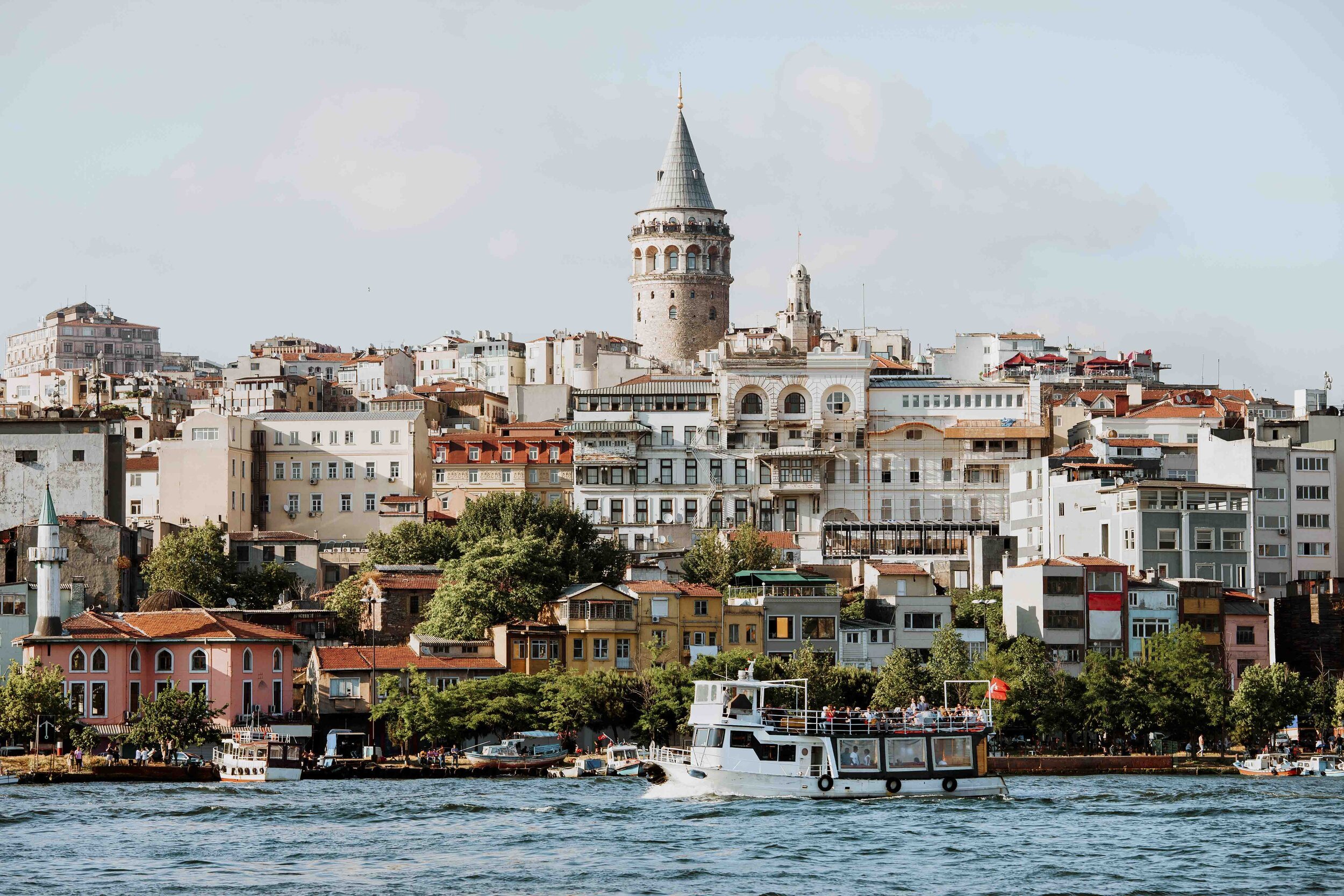
Where to stay in Istanbul
The best area to stay in Istanbul is Sultanahmet where most historical landmarks are located. There are several hotels and guest houses to choose from here depending on your budget.
If you’re ready to splurge and treat yourself to a fancy hotel, check out the Hotel Amira and White House Hotel. For a mid-range hotel, the Celine Hotel – Ottoman Mansion is a good option.
Lastly, if you are on a budget, consider Otantik Guesthouse or Basileus Hotel.
For budget travellers, Karakoy is also a great area to stay in. Some good places to stay here include Cheers Porthouse and Peradise Hotel.
Day 4 & 5 of your Turkey Itinerary – Izmir
After spending three glorious days in the capital of Turkey exploring and getting acquainted with Turkish culture, it’s time to move on to our next destination – Izmir. The distance between Istanbul to Izmir is about 480 kilometres.
The fastest way to reach Izmir from Istanbul is to take a flight to the Izmir Adnan Menderes Airport which only takes about 70 minutes. Another great way to travel from Istanbul to Izmir is to take an overnight bus which takes about 7 to 9 hours.
This is a much cheaper alternative and an overnight journey means saving hotel money and daytime hours!
What to do in Izmir
The city of Izmir is best known for its coastal, liberal and trendy vibe and lots of great restaurants to choose from. It is the third-largest city in Turkey. Though not many tourists visit Izmir, it makes for a great base for several day trips around the city. Here’s how you can make the most of your two days in Izmir –
-
Take a tour of the Ancient City of Ephesus and explore sites such as the Street of Curetes, Temple of Artemis and the Great Theatre.
-
Visit the mountain village of Şirince (also known as ‘the Tuscany of Turkey’) for its cobblestoned lanes and panoramic views.
-
Take a day trip to the beach town of Alacati or Cesme.
Try out traditional Turkish sweets such as baklava, keşkül and lokma amongst others.
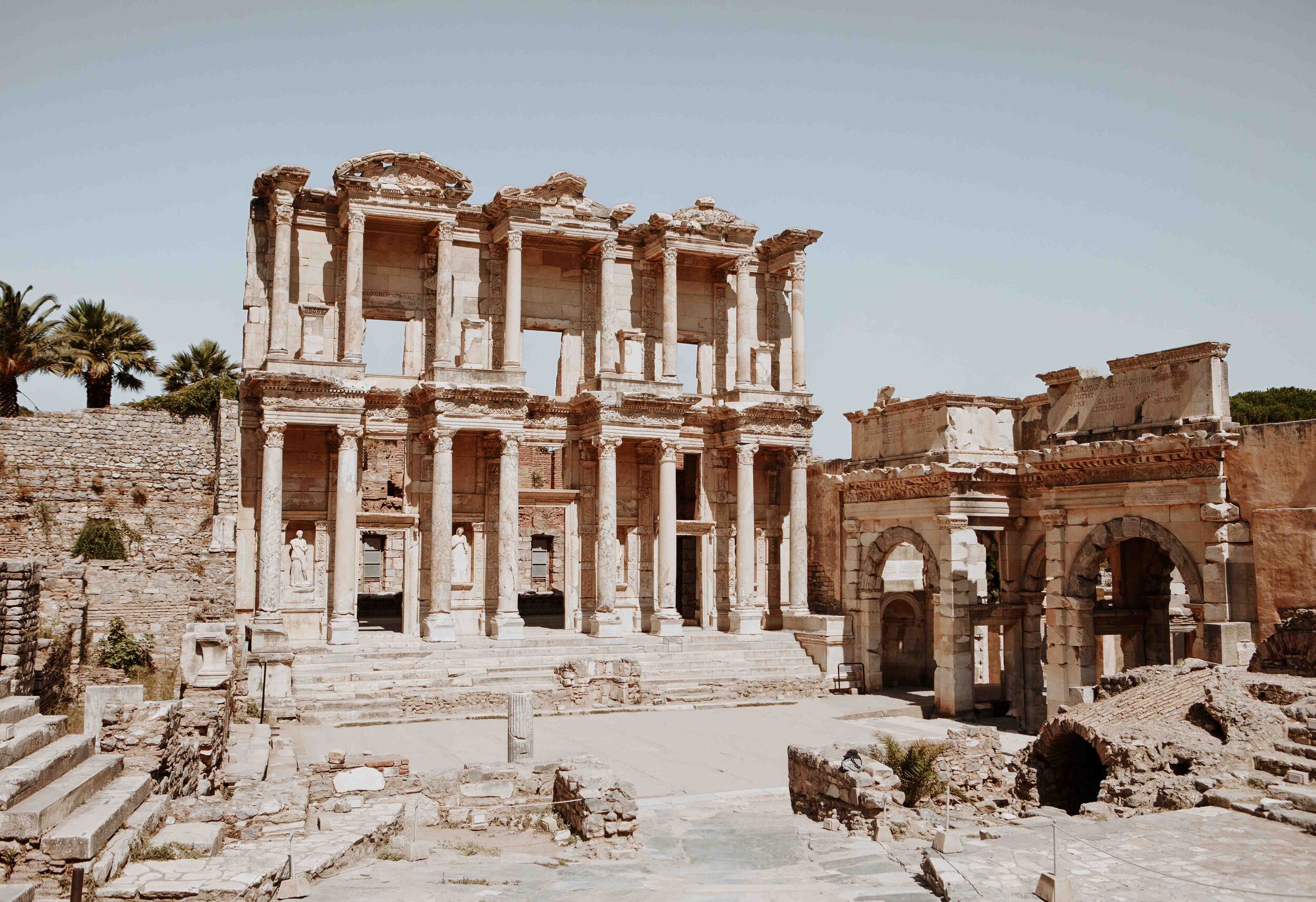
Where to stay in Izmir
Located on the stunning coast of the Aegean Sea, a stay in Izmir is sure to leave you rejuvenated. What’s even better is that accommodation costs in Izmir are far better than most places in Turkey – such as Istanbul and Cappadocia.
From budget options to luxurious resorts, Izmir has it all! If you’re on a tight budget, consider
My Happy Hostel or Hotel Apart Alsancak which is located in the heart of the city. Spil Suites and Hotel Elara are great options for those looking at mid-range places to stay in Izmir.
But if you’re looking for a luxurious time at an expensive hotel/ resort, then check out Renaissance Izmir in the city centre or the Key Hotel by the Aegean Sea.
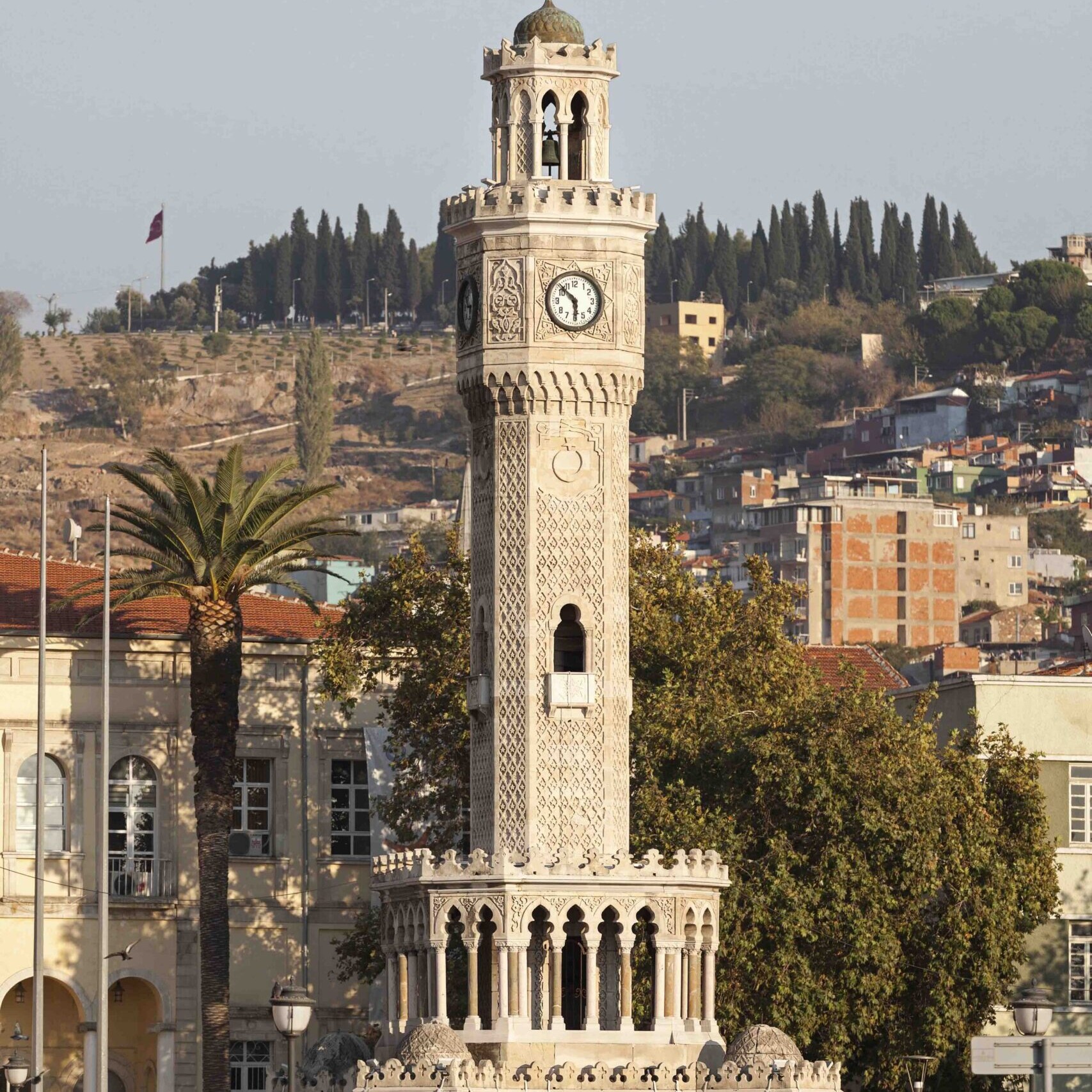

Day 6 of your Turkey Itinerary – Pamukkale
After having experienced Turkey’s immensely rich historical past and the various aspects of its cultures in Istanbul and Izmir, it is now time to take in the natural beauty the country has to offer in Pamukkale!
The good news is that it doesn’t take very long to reach Pamukkale from Izmir – which means more time to explore! The distance between Izmir to Pamukkale is just about 200 kilometres.
The cheapest way to travel this distance is to take the Turkish Railways (TCDD) train from any one of the many train stations in Izmir – Basmane, Adnan Menderes Airport or Selcuk to Denizli in Pamukkale.
Depending on where you board from, the journey takes between 3.5 to 5 hours. Another way to make this distance is to board a bus from the Izmir bus station and get off at the Denizli bus station.
This journey takes between 2 to 4 hours to complete and you can either take a late-night bus or an early morning bus to save daytime for exploring.

What to do in Pamukkale
If there’s one thing that Pamukkale is best known for, it has to be its spectacular thermal pools. Pamukkale means “cotton castle” in Turkish and it is famous for its natural terraces made of a kind of limestone known as travertine, which are filled with calcium-rich thermal water. So here’s how you can make the most of your day in Pamukkale –
-
Swim in the travertine thermal pools.
-
Explore the ancient Greco-Roman city of Hierapolis, including the beautiful amphitheatre.
-
Climb the top of the travertines and swim in the Cleopatra Pools – where Cleopatra is believed to have swum!
-
Explore the local market.
Where to stay in Pamukkale
Since Pamukkale is a small place, there are not a lot of options to choose from. But the limited options available here are comfortable enough for one night’s sleep.
If you’re one to look for luxury, there are only a couple of options available – and of these, the Doğa Thermal Health & Spa is definitely the best.
If you haven’t had enough of pampering yourself at the thermal waters, the Turkish spa here will leave you satisfied for sure! Another option you can look out for is the Richmond Pamukkale Thermal.
For a mid-range hotel, consider staying at the Melrose House Hotel which is home to many cats for a quick cuddle party! For those looking for a budget stay option, the Çavdar Thermal Hotel and Ozbay Hotel are two of the best.
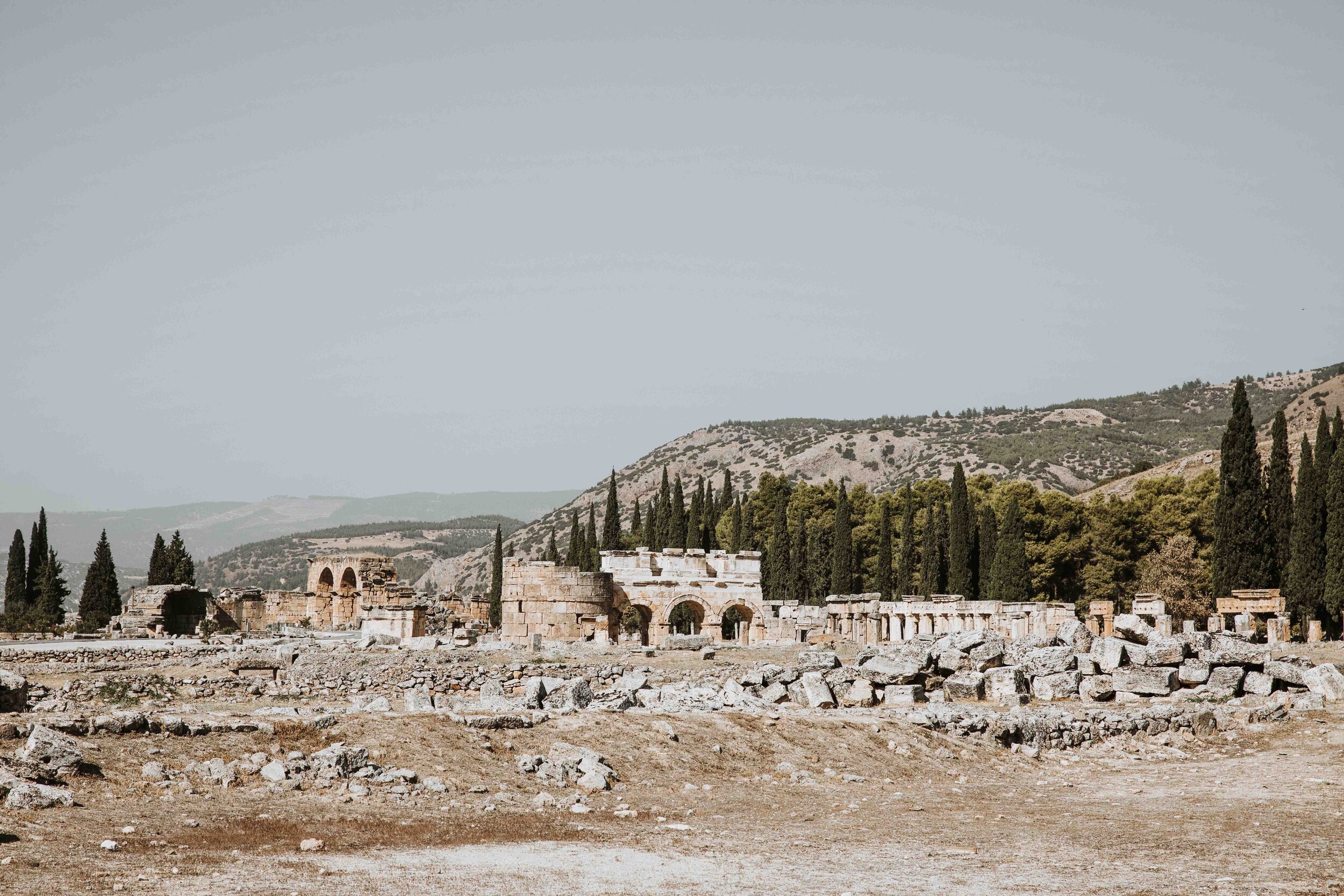
Day 7 & 8 of your Turkey Itinerary – Antalya
After a quick trip to Pamukkale, it’s time to head to Antalya. The distance between Pamukkale and Antalya is about 180 kilometres or so.
The easiest way to reach Antalya from Pamukkale is to hop on a bus going from Denizli to Antalya.
This route is served by several bus operators such as Kamil Koc, MetroTurizm and Pamukkale. The journey takes about 3 to 4 hours to complete and is the cheapest way to travel between Pamukkale and Antalya.
You can also choose to rent a car or hire a taxi but both these options are very expensive. There are no trains that run between Pamukkale and Antalya – so if you’re looking to save some money, travelling by bus might be your only option.

What to do in Antalya
Antalya is a beautiful coastal town in southern Turkey that is believed to have been founded by one King Attalus II somewhere around 150 BC. Antalya – like most other places in Turkey – is a beautiful amalgamation of rich heritage and mesmerising natural beauty. The city boasts of some stunning architecture – all dating back to the Ottoman period. This Mediterranean city is rich in culture and has a lot to explore! Here’s all that needs to be on your list while visiting Antalya –
-
Take a DIY walking tour of Kaleiçi – the old town of Antalya. Don’t forget to visit the Fluted Mosque, Hadrian’s Gate and Roman Tower.
-
Enjoy the nightlife at the Old City Marina and grab a bite or a drink (or both!) overlooking the Mediterranean Sea.
-
Visit Konyaalti Beach and Lara Beach – two of Antalya’s most stunning beaches.
-
Attend a show at the Antalya State Theatre.
-
Hike up to the mesmerising Duden Waterfalls and also visit the Kursunlu Waterfalls.
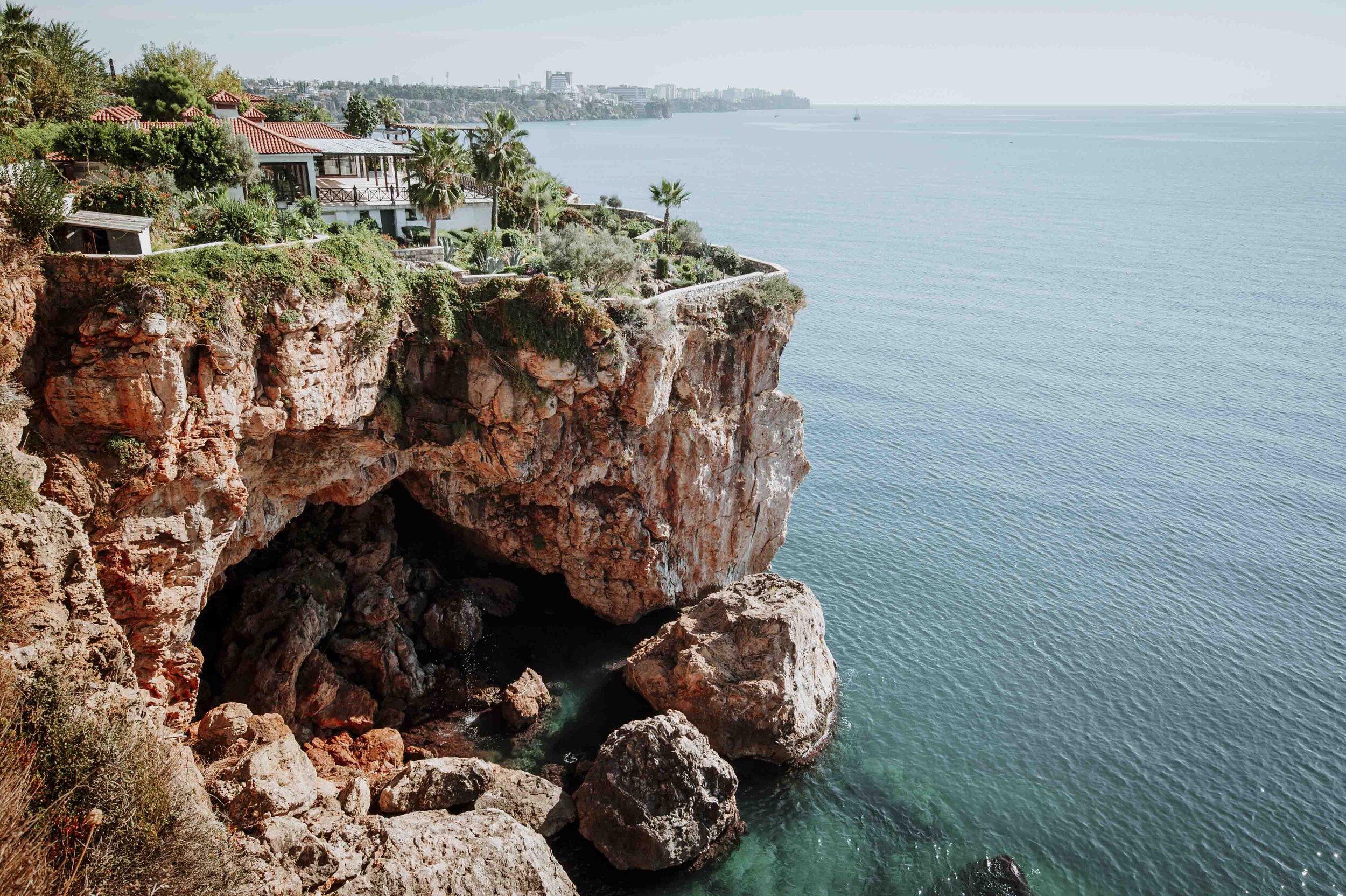
Where to stay in Antalya
Since Antalya is a big city, there is no dearth of accommodation options for each and every kind of tourist here. Depending on what your budget is, you are likely to find a place that fits your bill and leaves you comfortable and satisfied through the two nights at Antalya.
For budget and solo travellers, places like Hostel Vague and Gold Coast Hostel can be a great way to save money, while also meeting like-minded travellers.
For mid range options, considering staying at Beyaz Butik Hotel or Crowne Plaza Hotel. For those looking for a luxurious stay, Calista Luxury Resort, Delphin Diva Premiere and Casa Sur Hotel are some great options that you can take a pick.
Day 9 & 10 of your Turkey Itinerary – Cappadocia
It’s safe to say – I saved the best for the last! The distance from Antalya to Cappadocia is about 575 kilometres.
The fastest way to make this journey is to take a flight from Antalya to Cappadocia (Nevşehir Airport) but this is also the most expensive way to travel this distance. If you’re looking to save some money while also saving the most amount of time possible, consider taking an overnight bus.
There is no train service available between Antalya and Cappadocia. The bus journey from Antalya to Goreme in Cappadocia takes about 8 to 10 hours and operators such as Kamil Koc run this route daily.

What to do in Cappadocia
Cappadocia is often the entire reason some people plan a whole trip to Turkey and saving this bit for the last leg of your time in the country means you get to savour it the longest!
The Instagram famous hot air balloon rides you’ve seen in Turkey – yep that’s from Cappadocia! But apart from this extremely popular (and equally fun activity), there’s a lot else to explore and discover and this city. Here are some of the must-do things in Cappadocia that you cannot miss –
-
Take a hot air balloon flight overlooking the panoramic landscapes of Cappadocia
-
Explore the many rock formations in valleys such as Love Valley, Red Valley, Cavusin Valley etc.
-
Explore the mountain castle of Uçhisar Castle and Gumusler Monastery from the Byzantine Era.
-
Visit the complexes of the ancient underground twin cities of Derinkuyu and Kaymakli.
-
Visit the town of Avanos for traditional Turkish pottery, ceramics and handicrafts. Also, visit the underground Güray Museum.
-
Catch a dazzling sunset from Sunset Point in Gerome.
-
Explore the UNESCO World Heritage Site of the Gerome Open Air Museum.
-
Grab a bite at the Old Greek House.
Where to stay in Cappadocia
The stay options in Cappadocia are as beautiful as the city’s beauty itself. There are several cave hotels that are definitely worth checking out.
These caves are ancient and have been carved out of sedimentary rocks and have housed the locals of Cappadocia for thousands of years – and do so even today! Some of these have been turned into hotels and are definitely a very unique experience.
Some of the best cave hotels in Cappadocia include Guzide Cave Hotel and Mithra Cave Hotel.
Apart from these mid-range cave hotels, check out the Kayakapi Premium Caves and the Museum Hotel if you’re up for some splurging at upscale stay options.
For budget travellers, Homestay Cave Hostel and Hostel Terra Vista are great options.

What to pack for Turkey?
-
If you want to be more organized while on your trip to Turkey, especially now with the numerous required documents, keeping a separate document file in your hand luggage is a great way to do just that.
-
If you are visiting Turkey in the Summer, then you must keep sunscreen in your bag at all times to avoid getting sunburned. Summers are scorching in Turkey and very hard to bear. This beach holiday packing list may be a good starting point.
-
You should add an anti-theft backpack to your packing list if you plan to visit such destinations as Istanbul, which always remain crowded.
-
Turkey travel clothing tips include modest clothes. It is because, without covering your head, shoulder, and knees, you can’t enter mosques.
-
Apart from modest outfits, you must bring comfortable clothes for visiting other travel destinations like beaches, local markets, shopping centres, or hiking up to mountains.
-
Carrying an adapter to charge your devices, such as a smartphone, digital camera, and other gadgets is crucial while visiting any other city, state, or country – including Turkey.

10 Days in Turkey Itinerary – FAQs
What can you do in Turkey for 10 days?
There is so much to do in Turkey in 10 days. Places like Cappadocia, Antalya, Izmir and Istanbul are a must-visit. Apart from that, you can also check out the beach towns of Cesme and Alacati, Fethiye, the Gallipoli Peninsula Historical National Park, the capital city of Ankara, as well as the city of Troy where Homer’s Illiad is set
Is Turkey expensive for tourists?
On average, a 7-day solo budget trip to Turkey should cost around 635 GBP. For couples, the cost may go up to 1,035 GBP. The cheapest budget you can keep in Turkey is 20 GBP per person, per day including travel, food, stay and sightseeing. The cheapest time to visit Turkey is during the shoulder season which includes the winter months from January to mid-March and post-summer months of September to mid-December.
How many days do you need in Turkey?
Ideally, in 10 days you should be able to cover most major attractions of Turkey. Many people also visit Turkey for just 5 to 7 days but that can become very rushed and not give you enough time to enjoy each place. However, spending two weeks in Turkey gives you enough time to relax, see all major attractions and go off the beaten track as well!
What should you not miss in Turkey?
A hot air balloon flight over Cappadocia, swimming in the travertine thermal pools of Pamukkale, visiting the ancient city of Ephesus and indulging in traditional Turkish food like baklava, menemen, künefe, mercimek çorbası and drinking ayran and çay are a must!

Award-winning Analyst, multi-nominated digital content creator and photographer Lavina Dsouza's words capture stories about culture and tradition mainly through its food and people. She has written and contributed to publications such as The Washington Post, Lonely Planet and Matador Network, to name a few. She is the editor of UntraditionalHumans.com, a non-profit created to share inspiring stories from women of colour who break free from traditions and choose happiness.
She's also a speaker passionate about DEI and champions solo travel. She has collaborated with numerous renowned brands such as Intrepid Travel, TripAdvisor, Travel and Leisure and Adobe, to name a few.
She can be found on Twitter and Instagram.
PIN FOR LATER!
EXPLORE MORE READY-TO-GO ITINERARIES
EXPLORE MORE READY-TO-GO ITINERARIES
Some of the links on this post are affiliate links. These do not cost you extra to use, but will help provide Continent Hop with a small commission if/when you purchase through them, to recover some of the costs of running this website and providing free content to help you plan your travel. I appreciate your support!
The Gobbins Cliff path is a fantastic day trip that is full of fun even for those who don’t like hiking! One of the best activities in Northern Ireland, here’s all info on what to do on the Gobbins Cliff walk!
Who wouldn’t like to walk on waves?
I’m talking about walking along cliff edges, above crashing waves, engulfed with sea spray every so often…to the sound of seagulls and cormorants.
Not your usual cliff-side walk now, is it?
I was lucky to venture on a walk along the Gobbins cliff path on my recent travels to Northern Ireland.
The Gobbins is an area of basalt sea cliffs on the eastern coast of Island Magee. The cliffs were formed as a result of volcanic activity many years ago. Lush with bio-diversity, Gobbins cliff walk definitely is a nature lover’s delight.
Read on to know all you need to know before venturing out on the Gobbins cliff walk, one of the best things to do on your Causeway Coastal Way road trip!
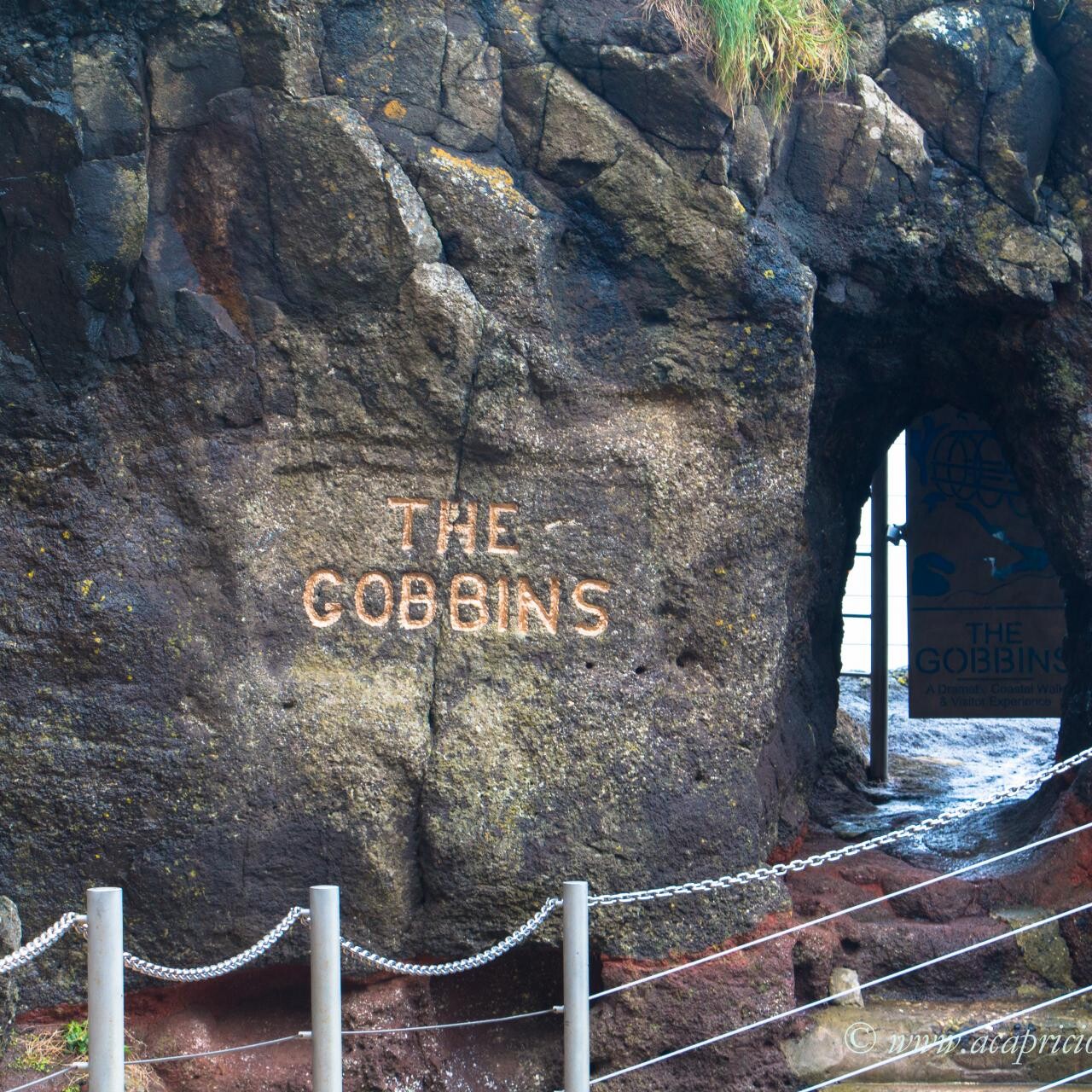
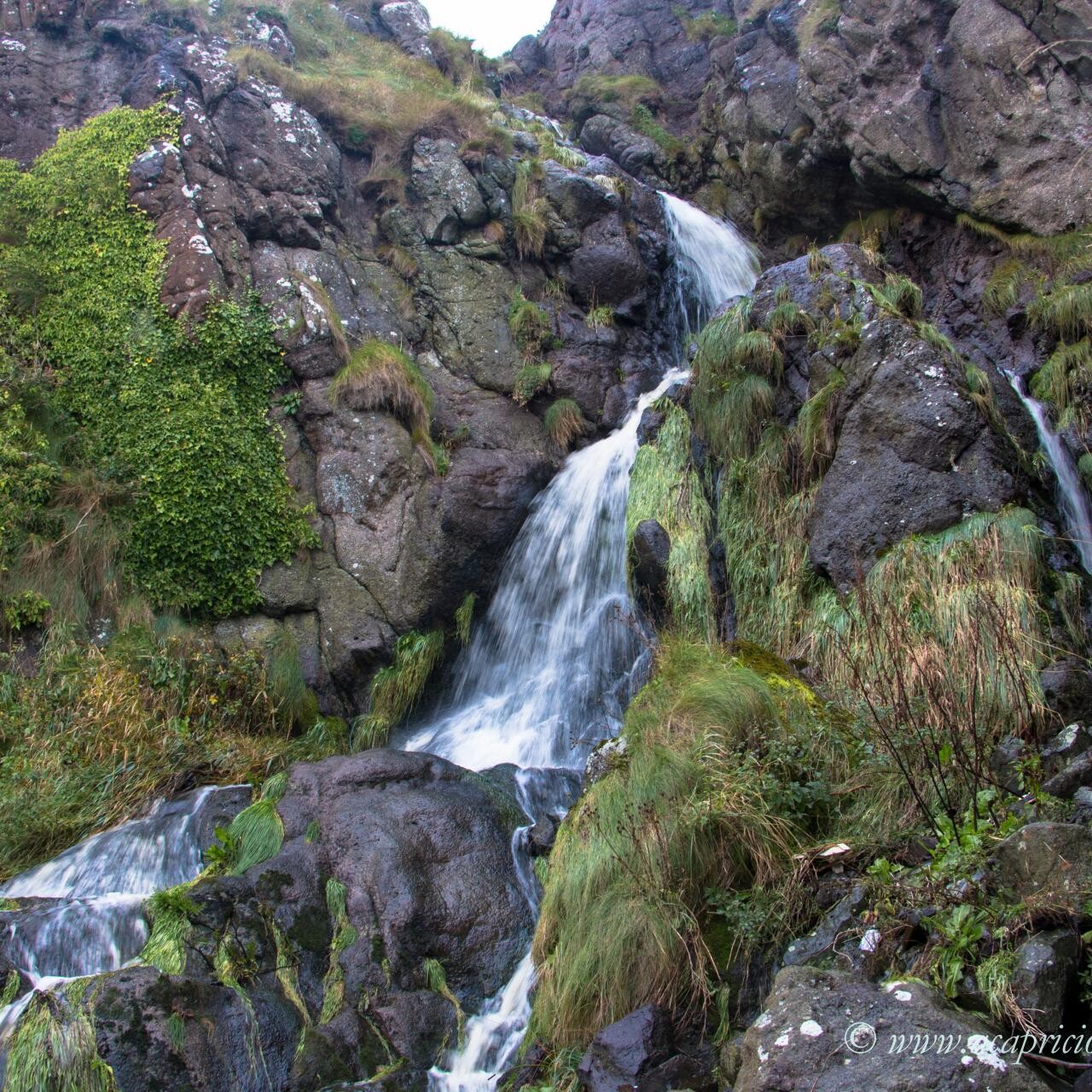
Best places to stay near Gobbins Cliff path for a last minute getaway
Arbor Hills for those wanting a luxurious stay
Harbour View a luxurious apartment at a reasonable price point
Derrin Guest House for the budget-conscious
Gobbins Cliff path – Essentials
What is the meaning of ‘The Gobbins’?
The name ‘Gobbins’ come from the Irish word Goban which means the tip of land or a headland.
How much are tickets to the Gobbins Cliff Path?
The Gobbins tickets cost per person is £20. Tickets for students and senior citizens are £14.5. You can also check for Gobbins promo code before booking so that you get a good discount.
The Gobbins booking can be done here.
What to keep in mind for the Gobbins Cliff Path?
-
Keep aside approximately three hours for the Gobbins Cliff path.
-
Arrive at least half an hour before the allotted slot at the Gobbins visitor center as a couple of minutes are dedicated to safety instructions and information.
-
The Gobbins Visitor Centre is open from 8.30 am – 5.00 pm every day. It has a shop and a cafe.
Visitors are not allowed to carry any food or bags on the Gobbins cliff path. There are free lockers to leave your things at the Gobbins visitor center.
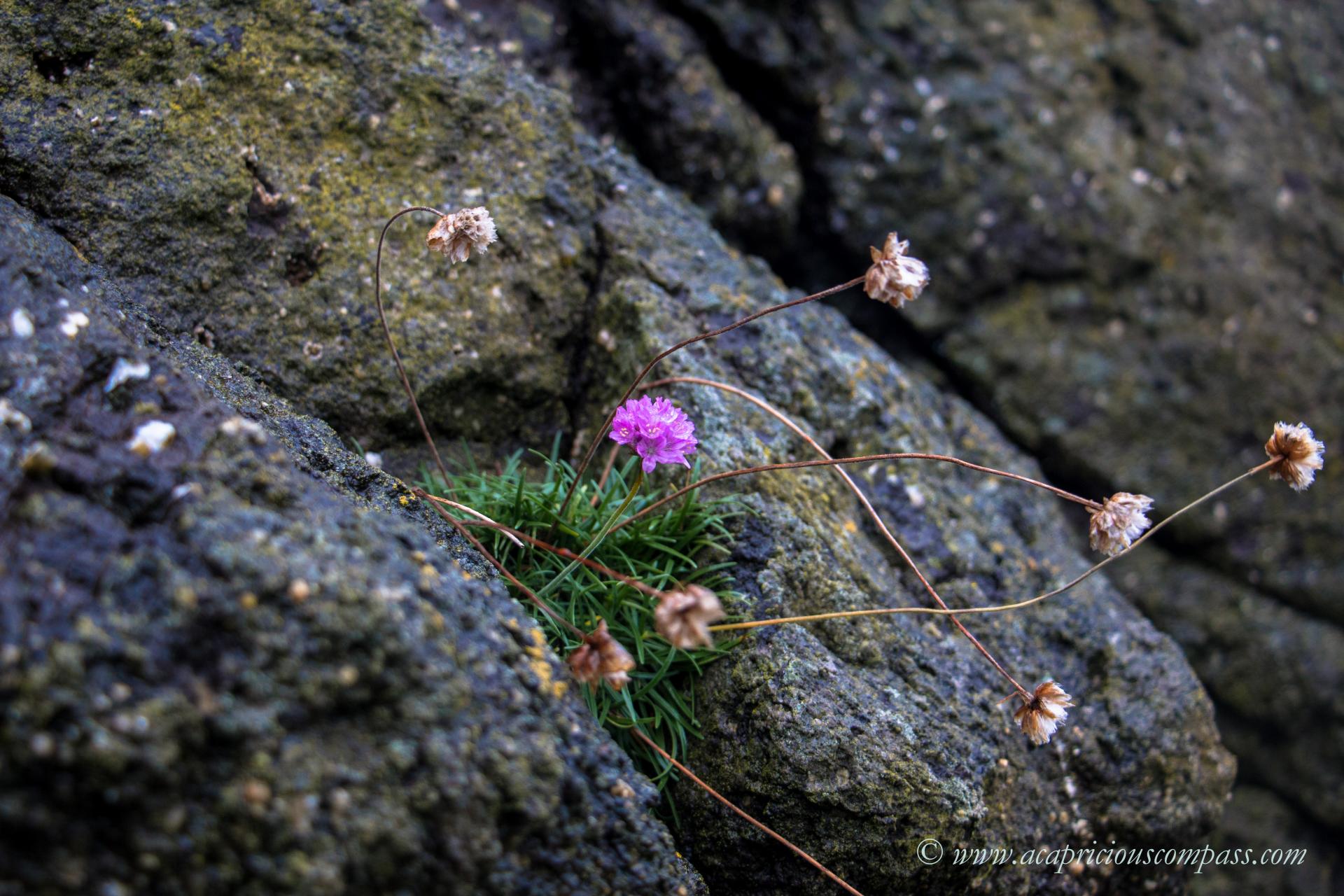
What to expect on the Gobbins Cliff walk?
As you approach the Gobbins path, you will witness the majesty of the rugged coastline of Northern Ireland looming ahead of you, with waves crashing against the cliffs in an awesome display of nature’s power! A rush of anticipation and excitement fills you as you eagerly wait for the Gobbins walk to begin.
But, before you embark on the Gobbins path, make sure you go through some of these important pointers.
How long is the Gobbins Cliff walk?
The Gobbins coastal path is around 5 kilometres long and can be physically challenging, as it involves steep inclines, narrow paths, and suspension bridges which can be pretty exhausting.
However, you can rest easy since the guided tour is designed to take you through the path safely and at a leisurely pace, allowing you to enjoy the stunning scenery and fascinating wildlife of the Gobbins along the way.
How long does the Gobbins walk take?
The 5 kilometre walk takes approximately 3 hours for a reasonably fit and active person to complete. Make sure that you check with the Gobbins visitor centre if you have any health complications.
Also, note that children are not permitted on the path. Anyone under 4 ft tall is not permitted on the Gobbins walk.
Is the Gobbins walkway difficult?
I usually have low energy levels and had jitters when I realized that it was a 5 kilometre walk after making the booking. But my fears were pointless!
Each Gobbins walk has a dedicated guide, runs after specific intervals, and does not exceed 10-15 people per group. It is paced out – giving you ample time to take in the scenery and the great environment around and deep breaths if required.
The Gobbins walkway is narrow, and walking aids or sticks are not allowed. Visitors with special mobility needs are not permitted on the Gobbins walk. If you have limited mobility, you can take a boat tour of the Gobbins Cliff. Boats for such tours set off from Ballylumford Harbour.

What is the weather like on the Gobbins tour?
June, July, and August are the best months to visit Larne – this summer season is the busiest season for tourism, and book tickets well in advance as the Gobbins Ireland receives many visitors during this season. September to February are the coldest months, and it rains or snows during these months.
The average temperature of Gobbins Ireland is in the single digits during most of the year here, which means you are likely to feel cold even during seasons other than winter in Larne.
However do note that the weather at the Gobbins Cliff can be unpredictable and can change quickly, so it’s important to be prepared for all eventualities.
It’s always a good idea to check the weather forecast so that you can come prepared with appropriate clothing and footwear. Remember, it’s better to be over-prepared than under-prepared when it comes to the weather in Northern Ireland!
What to wear on the Gobbins Cliffs Path?
The Gobbins walkway is right next to the awe-inspiring waters of the Northern Channel which are a constant companion on your walk and you can expect to be soaked in water, thanks to the crashing waves!
Embarking on this thrilling adventure means coming well-prepared. I would recommend comfortable but weather-appropriate clothing as the path can be windy and damp. A waterproof raincoat or jacket is a must and a change of clothes is also a good idea since you never know when the seas can get rough.
Wearing walking boots that provide ankle support is compulsory. Sneakers are not permitted. Walking boots are available for hire for £5 at the Gobbins centre, should you arrive around 15-30 minutes before your tour.
Safety briefing before the Gobbins Cliff Path
Before the walk begins, your guide will carefully explain safety instructions that you will need to follow on the Gobbins path and what you can expect. You will also receive a helmet which must be worn at all times to stay protected from falling debris.
Listen carefully to your guide and you will be all set for a thrill of a lifetime!
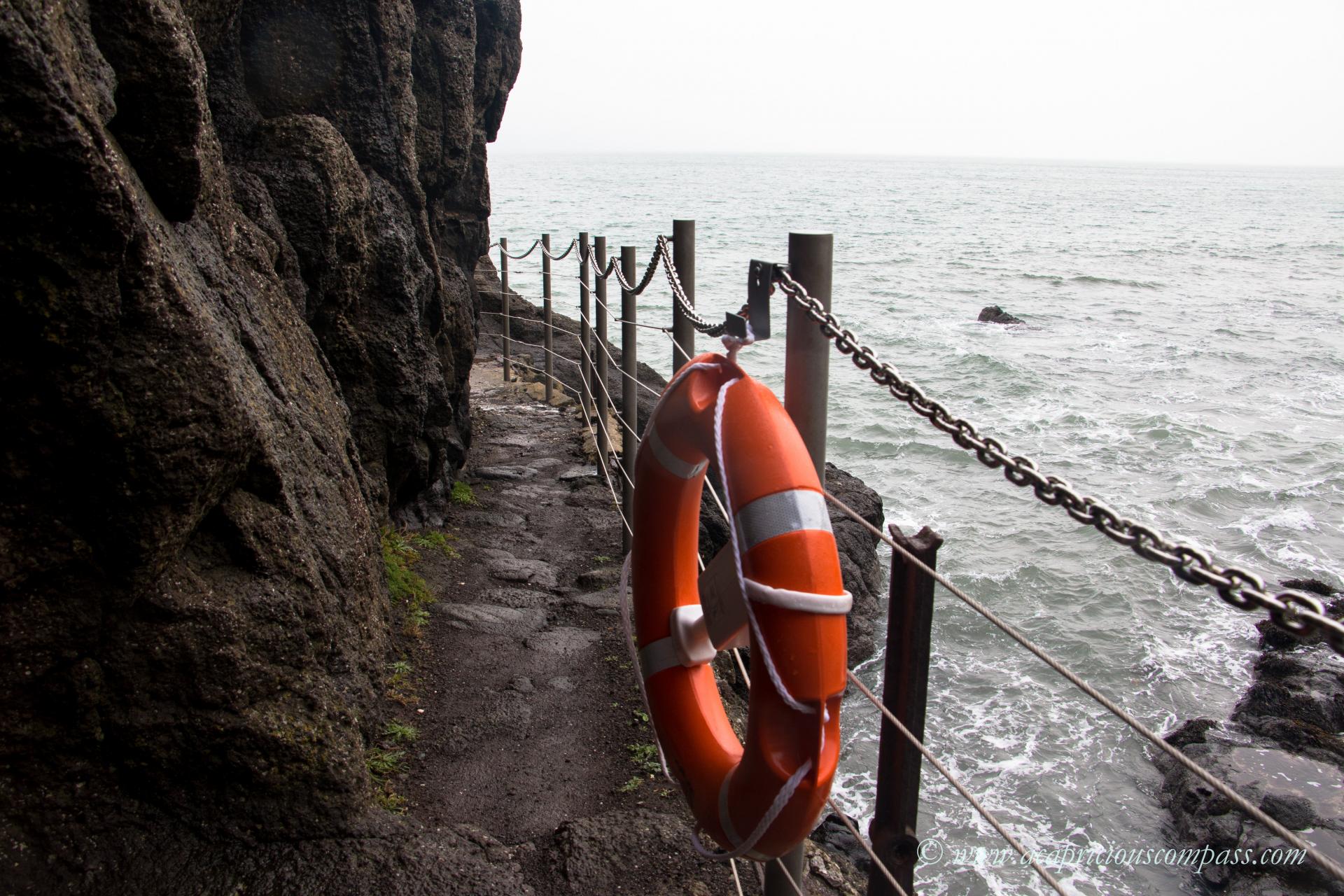
Gobbins Cliff Walk – The History
We were lucky to have a semi-rainy day in winter, and although the clouds played peek-a-boo, it did not hinder the experience. The Gobbins Cliff path is located on the Causeway Coastal Route (not to be confused with the Wild Atlantic Way in Ireland), and there’s interesting trivia concerning the making of the marvel the Gobbins Cliff walk is today:
-
You realize things co-depend. Berkeley Deane Wise, Chief Engineer of the Belfast and Northern Counties Railway Company, expanded the railway line to this dramatically deserted but beautiful location. He then envisioned the Gobbins to attract visitors to make use of these rail excursion trips.
-
The construction on the path began in 1901, and the first section opened in August 1902. The steel girder bridges were built in Belfast, brought through barges and moved up the coast through rafts.
-
The Gobbins cliff walk became a popular attraction instantly – tourists from Ireland and the United Kingdom took a steamer to Larne to see the Gobbins Cliff Path.
-
The path was closed during the Second World War. In 2006, the Larne Borough Council council reopened with fifteen new bridges and six elevated paths.
-
You realize if people connect to a place, they do all in their capacity to see it at its best. I’m talking of none other than John Lennon! He was particularly attached to the Gobbins cliff path and garnered even the army’s attention to restore it after its initial breakdown.
Off onto the path now…
We went – stepping on narrow ledges enough to hold one person, admiring the unique flora around, listening to tales of a bygone era. We stepped into Sandy Cave, where fancy tea parties and picnics were held: which could have been used as a smuggler’s cove ages ago!

Highlights of the Gobbins Cliff Path
The Gobbins Cliff Walk is not just a walk, it’s a symphony of thrilling sections that will take your breath away! The actual path starts at a different location. After safety instructions are given, the Gobbins tour guide will take you to the start of the path in a mini-van.
Like notes in a melody, each section adds its unique flavour to the experience, creating a thrilling crescendo that builds as you go. With tunnels, bridges, caves, and staircases, the Gobbins Cliff path is a journey through different worlds, each more captivating than the last.
As you traverse each section, you’ll be spellbound by the rugged beauty of the coastline, the thundering of the sea, and the sheer exhilaration of the experience. So, make sure you carry your camera or phone and click the Gobbins photos, which are sure to leave you wanting more.
Wise’s eye
The Wise’s eye bears the name of Berkeley Dean Wise, the man behind the Gobbins Cliff path. The eye is an oval-shaped hole and is the entrance to the Gobbins path tunnels.
Bridge 1
First amongst the several bridges on the Gobbins Cliff Path, which connect different sections of the walk, and offer some stunning views of the rocky coastline!
This bridge was part of the three bridges which were reconstructed during the 2016 redevelopment of the Gobbins path. An interesting fact? All the bridges are still unnamed! Have a name in mind? You could suggest it to them!
Bridge 2
Connecting two headlands and bridging a narrow crevasse is the second bridge. Take a look at either side of the crevasse and you will see birds nesting amongst spleenwort and kidney vetch.
If you peek out over the railing, you will also witness the remains of the original bridge built way back in 1902!
Sandy Cave
As you move ahead – stepping on narrow ledges enough to hold one person, admiring the unique flora around, listening to tales of a bygone era, you enter into Sandy Cave, where fancy tea parties and picnics were held: which could have been used as a smuggler’s cove ages ago!
Tubular Bridge
You will next pass through the Tubular Bridge, which fishers christened in an array of names as it was not visible to anybody from shore. The bridge was an astonishing feat of engineering and can be instantly recognized when you approach it.
Man O’ War
Cross the Tubular Bridge and you will find yourself before a giant sea stack called the Man O’ War. A fun fact, the Gobbins cliffs were formed by volcanic eruptions!
The sea stack formation didn’t reach the surface but solidified underground, reminding early visitors of ships from the age of sail.
The Gallery
A marvel of engineering, the Gallery is built right on the sheerest cliff of the Gobbins! A peak below and you will be thrilled to see waves crashing amidst sharp rocks jutting out towards you.
The Aquarium
As you continue admiring the steep cliff-side on the Gallery, proceed forward and pause for a short break at the Aquarium. The water is super clear when the sea is calm and provides a fantastic opportunity to watch exotic fish. The rocks around are encrusted with abundant marine life such as molluscs, sponges, and red seaweed.
We found Johnson on the way keeping an eye out for dolphins who were spotted in the waters nearby.
The Tunnel
The next section was my favourite part of the Gobbins Cliff walk – the Tunnel, 100 meters below sea level! It’s a fantastic, eerie experience as you can hear the sound of the sea, and the waves colliding with the rocks send gusts of salty wind your way as you crinkle your noses at the pungent smell of seagull poop!
In summer, you can feast your eyes on adorable puffins, which I guess would partially make up for the poop smell!
Storytime! Over 100 years ago, a man was employed just for pumping out water from the tunnel!
Spleenwort Cave & Otter’s Cave
Hike through the Tunnel and after climbing the stairs you will find yourself in daylight and will be greeted by another set of cliffs. Amid these cliffs lies the Spleenword Cave, adorned with tendrils of bright, delicate leaves. 19th-century collectors were fascinated by these Sea Spleenwort ferns.
One of the bizarre stories our guide mentioned was the discovery of Otter’s Cave: While work was underway, Wise and his men found a cave with a varied collection of bones of birds, deer, ox, and sheep! Nobody knew where the bones had come from and still do not! It was assumed it could have been an otter’s, and that’s how the name stuck.
The cave is now covered with a landslip, but the story continues to intrigue!
Bridge 3
As you pass over the third and final newly constructed bridge, it leads you around the jutting headland into a spacious cove. The towering cliffs on either side provide an imposing backdrop, casting a shadow over the serene waters below.
This bridge, like the others, is also unnamed and you can suggest a name if you have any.
The Swinging Bridge
This is probably the most exhilarating part of the Gobbins cliff path! The Swinging Bridge is a suspension bridge built across a deep inlet that has carved out a cave in the cliffside.
Rest assured, the bridge is extremely sturdy, but jump up and down a little and you are sure to feel a shiver down your spine as the bridge shakes!
Gordon’s Leap
A scary titbit here. The inlet across which the Swinging Bridge was built is called Gordon’s Leap though it is still debated why the inlet was named so. Some say it was named after a murder victim from the 17th century, perhaps a local councillor or one of the bridge’s original builders. Who knows?
Clifftop Viewpoint
Cross the suspension bridge and you reach the last section, the viewpoint which has some mesmerizing panoramic views of the sea.
Also, view the Seven Sisters Cave, the submerged Kraken Cave, and Heddles Port.
Finally, take a U-turn and walk back to the start…pausing for pictures along the way, trying to get a glimpse of the Mull of Kintyre and saying goodbye to Johnson – who was still keeping an eye out for dolphins!
Hike back through Wise’s eye and catch the minibus back to the Gobbins Visitor Centre. Collect your belongings from the lockers and grab a hot cup of coffee from the Gobbins cafe.
If you have some free time, do visit the information centre to get to know more about the history of the Gibbons, the wildlife that inhabits the cliffs, and the formation of the cliffs.

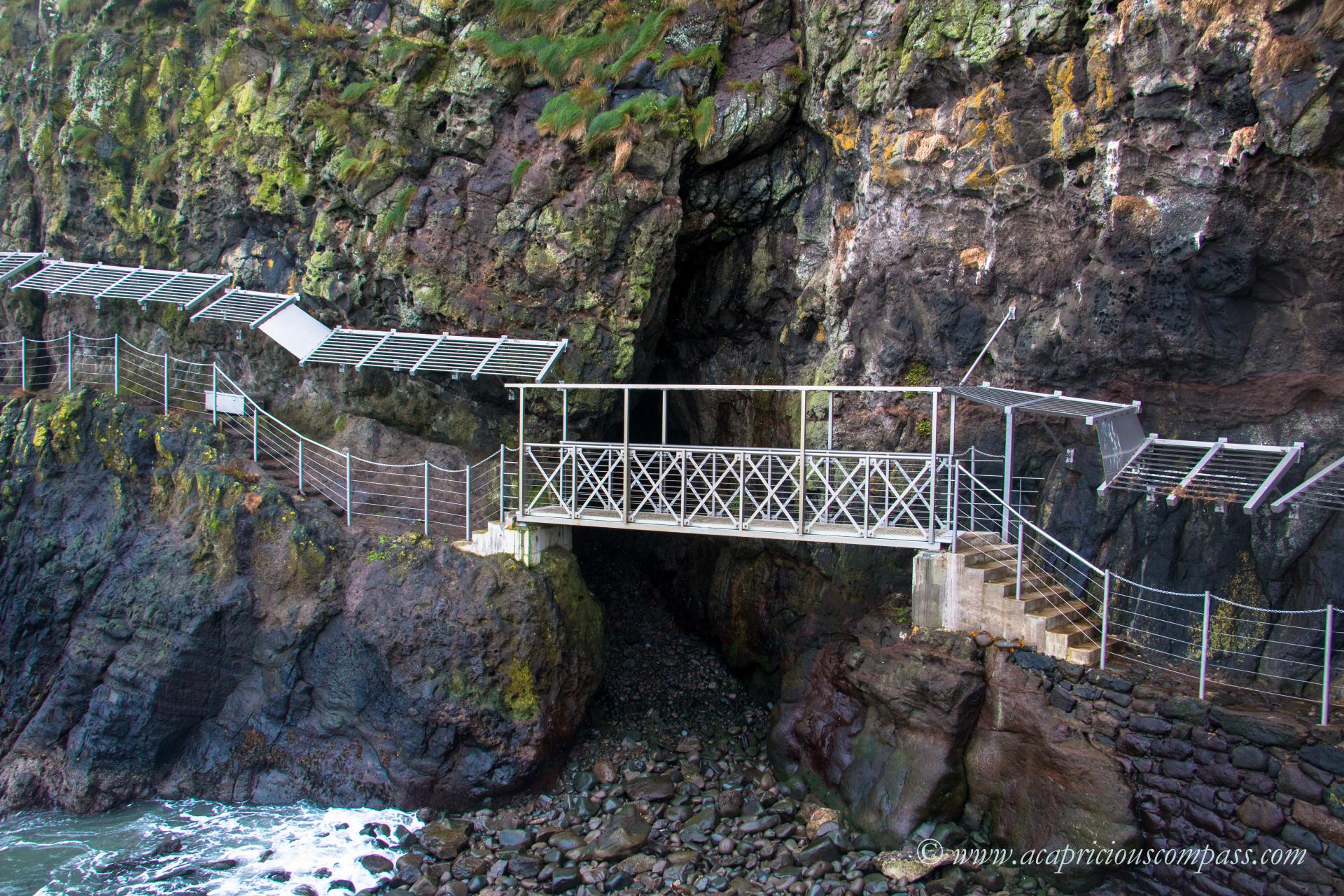
Gobbins Cliff walk – Biodiversity and wildlife
The Gobbins is an area of Special Scientific Interest due to the breeding seabird colony, maritime plant communities and notable species. The site is home to the only mainland puffins in Northern Ireland and peregrine falcons, fulmar, cormorant, shag, Kittiwakes and common guillemot.
The vertical cliffs are mostly covered with grass fed rescue. The lesser steep cliffs are covered with bracken, thrift, common bird’s-foot-trefoil, sea campion and kidney vetch and sea spleenwort.
You can see the molluscs, sponges, and red seaweed in the rock pools below the path during low tide. The deeper water is also home to the lion mane jellyfish, prey for seals and other larger sea animals.
If you’re lucky, you may be able to spot a dolphin, seal or porpoise as these animals have been spotted close to the cliffs.
Where to stay near Gobbins Cliff path?
Plenty of options are available around the Gobbins for a stay. My suggestions would be the following:
Luxury: Arbor Hills
Located about 2 kilometers from the Gobbins Visitor Centre, the Arbor Hills is a cosy remotely located hotel, featuring pod-like rooms with all necessary amenities including a private hot tub.
You also get a chance to see beautiful views of Larne in the distance, both during the day and at night.
Mid-range: Harbour View
The Harbour View is a sea-facing accommodation in Carrickfergus located around 12 kilometres from the Gobbins. The apartment is beautifully decorated and gives you a relaxed feeling and also has all the required amenities for a comfortable stay.
Budget: Derrin Guest House
The Derrin Guest House is located in Larne which is 15 kilometres away from the Gobbins and features tastefully decorated rooms and a sumptuous breakfast option. The scenic Antrim Coast Road starts just minutes away and the Larne railway station is also nearby.

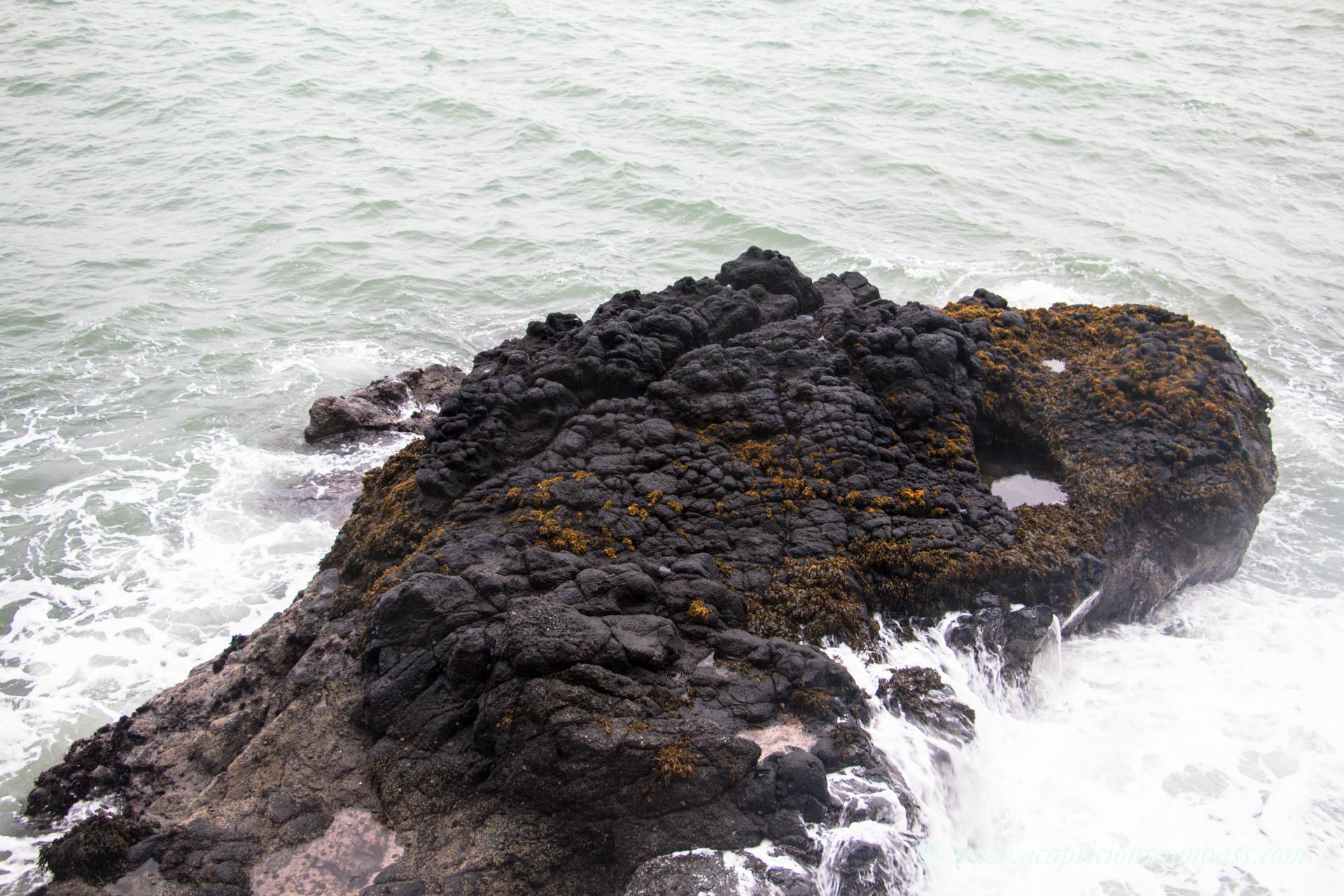
Places to see near Gobbins Cliff path
The walk should not take more than half of your day. If you’re spending more time in Larne, here are some attractions that are near the Gobbins Northern Ireland.
Carrickfergus Castle
Carrickfergus Castle is a Norman castle situated on the northern shore of Belfast Lough. The castle played an important role in Irish history and was used as a shelter during both world wars. It is one of the best-preserved medieval structures in Ireland.
Blackhead Lighthouse
Blackhead Lighthouse is a listed lighthouse that was built in 1902. The lighthouse is at the north end of the Belfast Lough. You can either visit the lighthouse for a panoramic view of the Antrim coast or stay here in one of the rooms available for guests. Book accommodation for staying at the Blackhead Lighthouse here.
You can also take a seaside walk through the Blackhead Path, which starts from the Whitehead Boat Club and runs around Blackhead.
This area of ‘Special Scientific Interest’ is known for its bird habitat, which is home to birds such as nesting peregrine falcons, meadow pipit, robin, goldfinch, and chaffinch. Dolphins, seals, and porpoises have also been spotted swimming in the lough.
Carfunnock Country Park
Carnfunnock Country Park is a large park located between Drains Bay and Ballygally. The park is owned and run by the Mid and East Antrim Borough Council and has gardens, walking trails, activities, and attractions for kids and adults. Entry to the park is free, but you need to pay for the activities and parking.
Tents and caravans are available for hire if you want to camp here and use the park as a base for touring the Antrim coast.
Belfast
Belfast is 28 km away from the Gobbins cliff walk. In Belfast, you can visit the Ulster Museum, which showcases Irish history through art and archaeology. Another attraction here is the Titanic Belfast, which tells the story of the RMS Titanic.
The building is at the site of the shipyard where the Titanic was built. Belfast Castle, Crumlin Road Gaol Visitor Attraction, St. Anne’s Cathedral, and the botanic gardens are amongst the many other attractions in the capital city. Also, check out this list of free things to do in Belfast in a day.

Northdown Museum
The Northdown is a local history museum dedicated to preserving and showcasing the fascinating history and heritage of the North Down area. The museum’s collection includes a wide range of artifacts, photographs, and documents that offer a glimpse into the social, economic, and cultural history of the region.
You can explore exhibits that cover topics such as the linen industry, shipbuilding, local agriculture, and the role of Bangor as a seaside resort.
Bangor Castle Walled Garden
The Bangor Castle Walled Garden is nestled in the heart of Bangor, Northern Ireland. Originally built in the 1840s as part of the Bangor Castle estate, the garden has since been restored and opened to the public as a beautiful and tranquil oasis.
One of the most striking features of the Bangor Castle Walled Garden is its formal layout. The garden is divided into a series of distinct sections, each with its unique character and charm. From the tranquil pond to the beautiful rose garden, there is something to discover around every corner.
The centrepiece of the garden is the beautiful glasshouse, which dates back to the 1880s and is a stunning example of Victorian architecture. Also check out the garden’s historic conservatory and gazebo, both of which have been carefully restored to their original glory.

Gobbins Cliff walk FAQs
Where is the Gobbins Cliff path?
The Gobbins is in Islandmagee, County Antrim on the Causeway Coastal Route, 32kms from Belfast. For navigation, the location is The Gobbins Visitor Centre, Middle Road, Islandmagee BT40 3SX.
Is the Gobbins free?
Only guided tours of the Gobbins walk are allowed. Tickets for adults are £20. Tickets for students, seniors (above 65) and children (below 16) are £14.5. Family tickets are available for £42.
How long is the Gobbins cliff path walk?
The Gobbins cliff walk is a 5 km walk. The path is narrow and steep. Walking sticks are not allowed on the Gobbins walk as well as people with certain health conditions.
How to get to Gobbins cliff walk?
If you are travelling by car, take the A2 Causeway Coastal Route from Belfast to Larne. Travel through Carrickfergus and turn right on B90 Island Lower Road. After this, follow the brown signposts to the visitor centre.
Take Bus 256 from the Europa Bus centre and get down at Larne Bus Station for public transport. From here, take the 170b to Ballystruder. Walk from Ballystrudder village to Middle Road for about 20 minutes to reach the Gobbins Visitor Centre from where the Gobbins trail starts.
Gobbins cliff path how long does it take?
The total walk takes around 3 hours to complete.
Who built the Gobbins Cliff Path?
The Gobbins Cliff Path was built by a civil engineer named Berkley Dean Wise between 1901 and 1902. The path was designed as a tourist attraction to showcase the rugged beauty of the Antrim coast and was hailed as a marvel of engineering when it first opened to the public in 1902.
Is The Gobbins worth it?
Yes! The Gobbins is definitely worth visiting if you enjoy outdoor activities, stunning scenery, and unique experiences. The cliff path offers an unforgettable adventure, allowing you to explore some of Northern Ireland’s most spectacular coastal landscapes from a unique perspective.

Award-winning Analyst, multi-nominated digital content creator and photographer Lavina Dsouza's words capture stories about culture and tradition mainly through its food and people. She has written and contributed to publications such as The Washington Post, Lonely Planet and Matador Network, to name a few. She is the editor of UntraditionalHumans.com, a non-profit created to share inspiring stories from women of colour who break free from traditions and choose happiness.
She's also a speaker passionate about DEI and champions solo travel. She has collaborated with numerous renowned brands such as Intrepid Travel, TripAdvisor, Travel and Leisure and Adobe, to name a few.
She can be found on Twitter and Instagram.
PIN FOR LATER!
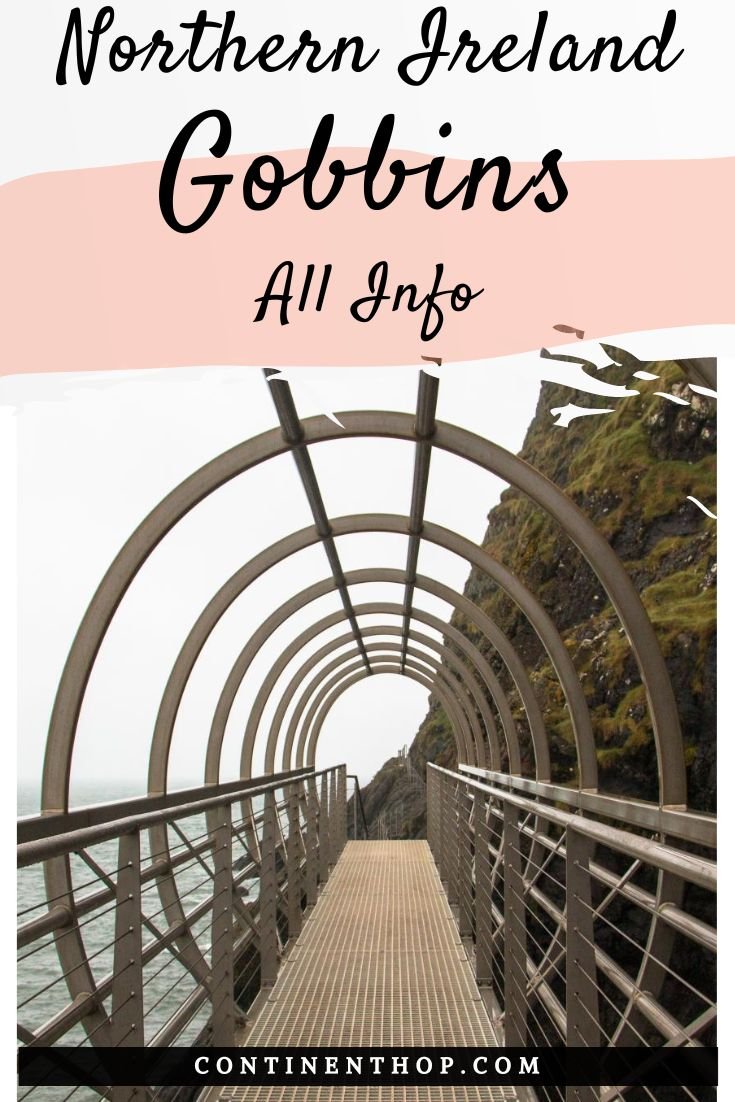

EXPLORE MORE OF NORTHERN IRELAND
Some of the links on this post are affiliate links. These do not cost you extra to use, but will help provide Continent Hop with a small commission if/when you purchase through them, to recover some of the costs of running this website and providing free content to help you plan your travel. I appreciate your support!
The Gobbins Cliff path is a fantastic day trip that is full of fun even for those who don’t like hiking! One of the best activities in Northern Ireland, here’s all info on what to do on the Gobbins Cliff walk!
Who wouldn’t like to walk on waves?
I’m talking about walking along cliff edges, above crashing waves, engulfed with sea spray every so often…to the sound of seagulls and cormorants.
Not your usual cliff-side walk now, is it?
I was lucky to venture on a walk along the Gobbins cliff path on my recent travels to Northern Ireland.
The Gobbins is an area of basalt sea cliffs on the eastern coast of Island Magee. The cliffs were formed as a result of volcanic activity many years ago. Lush with bio-diversity, Gobbins cliff walk definitely is a nature lover’s delight.
Read on to know all you need to know before venturing out on the Gobbins cliff walk, one of the best things to do on your Causeway Coastal Way road trip!


Best places to stay near Gobbins Cliff path for a last minute getaway
Arbor Hills for those wanting a luxurious stay
Harbour View a luxurious apartment at a reasonable price point
Derrin Guest House for the budget-conscious
Gobbins Cliff path – Essentials
What is the meaning of ‘The Gobbins’?
The name ‘Gobbins’ come from the Irish word Goban which means the tip of land or a headland.
How much are tickets to the Gobbins Cliff Path?
The Gobbins tickets cost per person is £20. Tickets for students and senior citizens are £14.5. You can also check for Gobbins promo code before booking so that you get a good discount.
The Gobbins booking can be done here.
What to keep in mind for the Gobbins Cliff Path?
-
Keep aside approximately three hours for the Gobbins Cliff path.
-
Arrive at least half an hour before the allotted slot at the Gobbins visitor center as a couple of minutes are dedicated to safety instructions and information.
-
The Gobbins Visitor Centre is open from 8.30 am – 5.00 pm every day. It has a shop and a cafe.
Visitors are not allowed to carry any food or bags on the Gobbins cliff path. There are free lockers to leave your things at the Gobbins visitor center.

What to expect on the Gobbins Cliff walk?
As you approach the Gobbins path, you will witness the majesty of the rugged coastline of Northern Ireland looming ahead of you, with waves crashing against the cliffs in an awesome display of nature’s power! A rush of anticipation and excitement fills you as you eagerly wait for the Gobbins walk to begin.
But, before you embark on the Gobbins path, make sure you go through some of these important pointers.
How long is the Gobbins Cliff walk?
The Gobbins coastal path is around 5 kilometres long and can be physically challenging, as it involves steep inclines, narrow paths, and suspension bridges which can be pretty exhausting.
However, you can rest easy since the guided tour is designed to take you through the path safely and at a leisurely pace, allowing you to enjoy the stunning scenery and fascinating wildlife of the Gobbins along the way.
How long does the Gobbins walk take?
The 5 kilometre walk takes approximately 3 hours for a reasonably fit and active person to complete. Make sure that you check with the Gobbins visitor centre if you have any health complications.
Also, note that children are not permitted on the path. Anyone under 4 ft tall is not permitted on the Gobbins walk.
Is the Gobbins walkway difficult?
I usually have low energy levels and had jitters when I realized that it was a 5 kilometre walk after making the booking. But my fears were pointless!
Each Gobbins walk has a dedicated guide, runs after specific intervals, and does not exceed 10-15 people per group. It is paced out – giving you ample time to take in the scenery and the great environment around and deep breaths if required.
The Gobbins walkway is narrow, and walking aids or sticks are not allowed. Visitors with special mobility needs are not permitted on the Gobbins walk. If you have limited mobility, you can take a boat tour of the Gobbins Cliff. Boats for such tours set off from Ballylumford Harbour.

What is the weather like on the Gobbins tour?
June, July, and August are the best months to visit Larne – this summer season is the busiest season for tourism, and book tickets well in advance as the Gobbins Ireland receives many visitors during this season. September to February are the coldest months, and it rains or snows during these months.
The average temperature of Gobbins Ireland is in the single digits during most of the year here, which means you are likely to feel cold even during seasons other than winter in Larne.
However do note that the weather at the Gobbins Cliff can be unpredictable and can change quickly, so it’s important to be prepared for all eventualities.
It’s always a good idea to check the weather forecast so that you can come prepared with appropriate clothing and footwear. Remember, it’s better to be over-prepared than under-prepared when it comes to the weather in Northern Ireland!
What to wear on the Gobbins Cliffs Path?
The Gobbins walkway is right next to the awe-inspiring waters of the Northern Channel which are a constant companion on your walk and you can expect to be soaked in water, thanks to the crashing waves!
Embarking on this thrilling adventure means coming well-prepared. I would recommend comfortable but weather-appropriate clothing as the path can be windy and damp. A waterproof raincoat or jacket is a must and a change of clothes is also a good idea since you never know when the seas can get rough.
Wearing walking boots that provide ankle support is compulsory. Sneakers are not permitted. Walking boots are available for hire for £5 at the Gobbins centre, should you arrive around 15-30 minutes before your tour.
Safety briefing before the Gobbins Cliff Path
Before the walk begins, your guide will carefully explain safety instructions that you will need to follow on the Gobbins path and what you can expect. You will also receive a helmet which must be worn at all times to stay protected from falling debris.
Listen carefully to your guide and you will be all set for a thrill of a lifetime!

Gobbins Cliff Walk – The History
We were lucky to have a semi-rainy day in winter, and although the clouds played peek-a-boo, it did not hinder the experience. The Gobbins Cliff path is located on the Causeway Coastal Route (not to be confused with the Wild Atlantic Way in Ireland), and there’s interesting trivia concerning the making of the marvel the Gobbins Cliff walk is today:
-
You realize things co-depend. Berkeley Deane Wise, Chief Engineer of the Belfast and Northern Counties Railway Company, expanded the railway line to this dramatically deserted but beautiful location. He then envisioned the Gobbins to attract visitors to make use of these rail excursion trips.
-
The construction on the path began in 1901, and the first section opened in August 1902. The steel girder bridges were built in Belfast, brought through barges and moved up the coast through rafts.
-
The Gobbins cliff walk became a popular attraction instantly – tourists from Ireland and the United Kingdom took a steamer to Larne to see the Gobbins Cliff Path.
-
The path was closed during the Second World War. In 2006, the Larne Borough Council council reopened with fifteen new bridges and six elevated paths.
-
You realize if people connect to a place, they do all in their capacity to see it at its best. I’m talking of none other than John Lennon! He was particularly attached to the Gobbins cliff path and garnered even the army’s attention to restore it after its initial breakdown.
Off onto the path now…
We went – stepping on narrow ledges enough to hold one person, admiring the unique flora around, listening to tales of a bygone era. We stepped into Sandy Cave, where fancy tea parties and picnics were held: which could have been used as a smuggler’s cove ages ago!

Highlights of the Gobbins Cliff Path
The Gobbins Cliff Walk is not just a walk, it’s a symphony of thrilling sections that will take your breath away! The actual path starts at a different location. After safety instructions are given, the Gobbins tour guide will take you to the start of the path in a mini-van.
Like notes in a melody, each section adds its unique flavour to the experience, creating a thrilling crescendo that builds as you go. With tunnels, bridges, caves, and staircases, the Gobbins Cliff path is a journey through different worlds, each more captivating than the last.
As you traverse each section, you’ll be spellbound by the rugged beauty of the coastline, the thundering of the sea, and the sheer exhilaration of the experience. So, make sure you carry your camera or phone and click the Gobbins photos, which are sure to leave you wanting more.
Wise’s eye
The Wise’s eye bears the name of Berkeley Dean Wise, the man behind the Gobbins Cliff path. The eye is an oval-shaped hole and is the entrance to the Gobbins path tunnels.
Bridge 1
First amongst the several bridges on the Gobbins Cliff Path, which connect different sections of the walk, and offer some stunning views of the rocky coastline!
This bridge was part of the three bridges which were reconstructed during the 2016 redevelopment of the Gobbins path. An interesting fact? All the bridges are still unnamed! Have a name in mind? You could suggest it to them!
Bridge 2
Connecting two headlands and bridging a narrow crevasse is the second bridge. Take a look at either side of the crevasse and you will see birds nesting amongst spleenwort and kidney vetch.
If you peek out over the railing, you will also witness the remains of the original bridge built way back in 1902!
Sandy Cave
As you move ahead – stepping on narrow ledges enough to hold one person, admiring the unique flora around, listening to tales of a bygone era, you enter into Sandy Cave, where fancy tea parties and picnics were held: which could have been used as a smuggler’s cove ages ago!
Tubular Bridge
You will next pass through the Tubular Bridge, which fishers christened in an array of names as it was not visible to anybody from shore. The bridge was an astonishing feat of engineering and can be instantly recognized when you approach it.
Man O’ War
Cross the Tubular Bridge and you will find yourself before a giant sea stack called the Man O’ War. A fun fact, the Gobbins cliffs were formed by volcanic eruptions!
The sea stack formation didn’t reach the surface but solidified underground, reminding early visitors of ships from the age of sail.
The Gallery
A marvel of engineering, the Gallery is built right on the sheerest cliff of the Gobbins! A peak below and you will be thrilled to see waves crashing amidst sharp rocks jutting out towards you.
The Aquarium
As you continue admiring the steep cliff-side on the Gallery, proceed forward and pause for a short break at the Aquarium. The water is super clear when the sea is calm and provides a fantastic opportunity to watch exotic fish. The rocks around are encrusted with abundant marine life such as molluscs, sponges, and red seaweed.
We found Johnson on the way keeping an eye out for dolphins who were spotted in the waters nearby.
The Tunnel
The next section was my favourite part of the Gobbins Cliff walk – the Tunnel, 100 meters below sea level! It’s a fantastic, eerie experience as you can hear the sound of the sea, and the waves colliding with the rocks send gusts of salty wind your way as you crinkle your noses at the pungent smell of seagull poop!
In summer, you can feast your eyes on adorable puffins, which I guess would partially make up for the poop smell!
Storytime! Over 100 years ago, a man was employed just for pumping out water from the tunnel!
Spleenwort Cave & Otter’s Cave
Hike through the Tunnel and after climbing the stairs you will find yourself in daylight and will be greeted by another set of cliffs. Amid these cliffs lies the Spleenword Cave, adorned with tendrils of bright, delicate leaves. 19th-century collectors were fascinated by these Sea Spleenwort ferns.
One of the bizarre stories our guide mentioned was the discovery of Otter’s Cave: While work was underway, Wise and his men found a cave with a varied collection of bones of birds, deer, ox, and sheep! Nobody knew where the bones had come from and still do not! It was assumed it could have been an otter’s, and that’s how the name stuck.
The cave is now covered with a landslip, but the story continues to intrigue!
Bridge 3
As you pass over the third and final newly constructed bridge, it leads you around the jutting headland into a spacious cove. The towering cliffs on either side provide an imposing backdrop, casting a shadow over the serene waters below.
This bridge, like the others, is also unnamed and you can suggest a name if you have any.
The Swinging Bridge
This is probably the most exhilarating part of the Gobbins cliff path! The Swinging Bridge is a suspension bridge built across a deep inlet that has carved out a cave in the cliffside.
Rest assured, the bridge is extremely sturdy, but jump up and down a little and you are sure to feel a shiver down your spine as the bridge shakes!
Gordon’s Leap
A scary titbit here. The inlet across which the Swinging Bridge was built is called Gordon’s Leap though it is still debated why the inlet was named so. Some say it was named after a murder victim from the 17th century, perhaps a local councillor or one of the bridge’s original builders. Who knows?
Clifftop Viewpoint
Cross the suspension bridge and you reach the last section, the viewpoint which has some mesmerizing panoramic views of the sea.
Also, view the Seven Sisters Cave, the submerged Kraken Cave, and Heddles Port.
Finally, take a U-turn and walk back to the start…pausing for pictures along the way, trying to get a glimpse of the Mull of Kintyre and saying goodbye to Johnson – who was still keeping an eye out for dolphins!
Hike back through Wise’s eye and catch the minibus back to the Gobbins Visitor Centre. Collect your belongings from the lockers and grab a hot cup of coffee from the Gobbins cafe.
If you have some free time, do visit the information centre to get to know more about the history of the Gibbons, the wildlife that inhabits the cliffs, and the formation of the cliffs.


Gobbins Cliff walk – Biodiversity and wildlife
The Gobbins is an area of Special Scientific Interest due to the breeding seabird colony, maritime plant communities and notable species. The site is home to the only mainland puffins in Northern Ireland and peregrine falcons, fulmar, cormorant, shag, Kittiwakes and common guillemot.
The vertical cliffs are mostly covered with grass fed rescue. The lesser steep cliffs are covered with bracken, thrift, common bird’s-foot-trefoil, sea campion and kidney vetch and sea spleenwort.
You can see the molluscs, sponges, and red seaweed in the rock pools below the path during low tide. The deeper water is also home to the lion mane jellyfish, prey for seals and other larger sea animals.
If you’re lucky, you may be able to spot a dolphin, seal or porpoise as these animals have been spotted close to the cliffs.
Where to stay near Gobbins Cliff path?
Plenty of options are available around the Gobbins for a stay. My suggestions would be the following:
Luxury: Arbor Hills
Located about 2 kilometers from the Gobbins Visitor Centre, the Arbor Hills is a cosy remotely located hotel, featuring pod-like rooms with all necessary amenities including a private hot tub.
You also get a chance to see beautiful views of Larne in the distance, both during the day and at night.
Mid-range: Harbour View
The Harbour View is a sea-facing accommodation in Carrickfergus located around 12 kilometres from the Gobbins. The apartment is beautifully decorated and gives you a relaxed feeling and also has all the required amenities for a comfortable stay.
Budget: Derrin Guest House
The Derrin Guest House is located in Larne which is 15 kilometres away from the Gobbins and features tastefully decorated rooms and a sumptuous breakfast option. The scenic Antrim Coast Road starts just minutes away and the Larne railway station is also nearby.


Places to see near Gobbins Cliff path
The walk should not take more than half of your day. If you’re spending more time in Larne, here are some attractions that are near the Gobbins Northern Ireland.
Carrickfergus Castle
Carrickfergus Castle is a Norman castle situated on the northern shore of Belfast Lough. The castle played an important role in Irish history and was used as a shelter during both world wars. It is one of the best-preserved medieval structures in Ireland.
Blackhead Lighthouse
Blackhead Lighthouse is a listed lighthouse that was built in 1902. The lighthouse is at the north end of the Belfast Lough. You can either visit the lighthouse for a panoramic view of the Antrim coast or stay here in one of the rooms available for guests. Book accommodation for staying at the Blackhead Lighthouse here.
You can also take a seaside walk through the Blackhead Path, which starts from the Whitehead Boat Club and runs around Blackhead.
This area of ‘Special Scientific Interest’ is known for its bird habitat, which is home to birds such as nesting peregrine falcons, meadow pipit, robin, goldfinch, and chaffinch. Dolphins, seals, and porpoises have also been spotted swimming in the lough.
Carfunnock Country Park
Carnfunnock Country Park is a large park located between Drains Bay and Ballygally. The park is owned and run by the Mid and East Antrim Borough Council and has gardens, walking trails, activities, and attractions for kids and adults. Entry to the park is free, but you need to pay for the activities and parking.
Tents and caravans are available for hire if you want to camp here and use the park as a base for touring the Antrim coast.
Belfast
Belfast is 28 km away from the Gobbins cliff walk. In Belfast, you can visit the Ulster Museum, which showcases Irish history through art and archaeology. Another attraction here is the Titanic Belfast, which tells the story of the RMS Titanic.
The building is at the site of the shipyard where the Titanic was built. Belfast Castle, Crumlin Road Gaol Visitor Attraction, St. Anne’s Cathedral, and the botanic gardens are amongst the many other attractions in the capital city. Also, check out this list of free things to do in Belfast in a day.

Northdown Museum
The Northdown is a local history museum dedicated to preserving and showcasing the fascinating history and heritage of the North Down area. The museum’s collection includes a wide range of artifacts, photographs, and documents that offer a glimpse into the social, economic, and cultural history of the region.
You can explore exhibits that cover topics such as the linen industry, shipbuilding, local agriculture, and the role of Bangor as a seaside resort.
Bangor Castle Walled Garden
The Bangor Castle Walled Garden is nestled in the heart of Bangor, Northern Ireland. Originally built in the 1840s as part of the Bangor Castle estate, the garden has since been restored and opened to the public as a beautiful and tranquil oasis.
One of the most striking features of the Bangor Castle Walled Garden is its formal layout. The garden is divided into a series of distinct sections, each with its unique character and charm. From the tranquil pond to the beautiful rose garden, there is something to discover around every corner.
The centrepiece of the garden is the beautiful glasshouse, which dates back to the 1880s and is a stunning example of Victorian architecture. Also check out the garden’s historic conservatory and gazebo, both of which have been carefully restored to their original glory.

Gobbins Cliff walk FAQs
Where is the Gobbins Cliff path?
The Gobbins is in Islandmagee, County Antrim on the Causeway Coastal Route, 32kms from Belfast. For navigation, the location is The Gobbins Visitor Centre, Middle Road, Islandmagee BT40 3SX.
Is the Gobbins free?
Only guided tours of the Gobbins walk are allowed. Tickets for adults are £20. Tickets for students, seniors (above 65) and children (below 16) are £14.5. Family tickets are available for £42.
How long is the Gobbins cliff path walk?
The Gobbins cliff walk is a 5 km walk. The path is narrow and steep. Walking sticks are not allowed on the Gobbins walk as well as people with certain health conditions.
How to get to Gobbins cliff walk?
If you are travelling by car, take the A2 Causeway Coastal Route from Belfast to Larne. Travel through Carrickfergus and turn right on B90 Island Lower Road. After this, follow the brown signposts to the visitor centre.
Take Bus 256 from the Europa Bus centre and get down at Larne Bus Station for public transport. From here, take the 170b to Ballystruder. Walk from Ballystrudder village to Middle Road for about 20 minutes to reach the Gobbins Visitor Centre from where the Gobbins trail starts.
Gobbins cliff path how long does it take?
The total walk takes around 3 hours to complete.
Who built the Gobbins Cliff Path?
The Gobbins Cliff Path was built by a civil engineer named Berkley Dean Wise between 1901 and 1902. The path was designed as a tourist attraction to showcase the rugged beauty of the Antrim coast and was hailed as a marvel of engineering when it first opened to the public in 1902.
Is The Gobbins worth it?
Yes! The Gobbins is definitely worth visiting if you enjoy outdoor activities, stunning scenery, and unique experiences. The cliff path offers an unforgettable adventure, allowing you to explore some of Northern Ireland’s most spectacular coastal landscapes from a unique perspective.

Award-winning Analyst, multi-nominated digital content creator and photographer Lavina Dsouza's words capture stories about culture and tradition mainly through its food and people. She has written and contributed to publications such as The Washington Post, Lonely Planet and Matador Network, to name a few. She is the editor of UntraditionalHumans.com, a non-profit created to share inspiring stories from women of colour who break free from traditions and choose happiness.
She's also a speaker passionate about DEI and champions solo travel. She has collaborated with numerous renowned brands such as Intrepid Travel, TripAdvisor, Travel and Leisure and Adobe, to name a few.
She can be found on Twitter and Instagram.
PIN FOR LATER!


EXPLORE MORE OF NORTHERN IRELAND
Some of the links on this post are affiliate links. These do not cost you extra to use, but will help provide Continent Hop with a small commission if/when you purchase through them, to recover some of the costs of running this website and providing free content to help you plan your travel. I appreciate your support!


